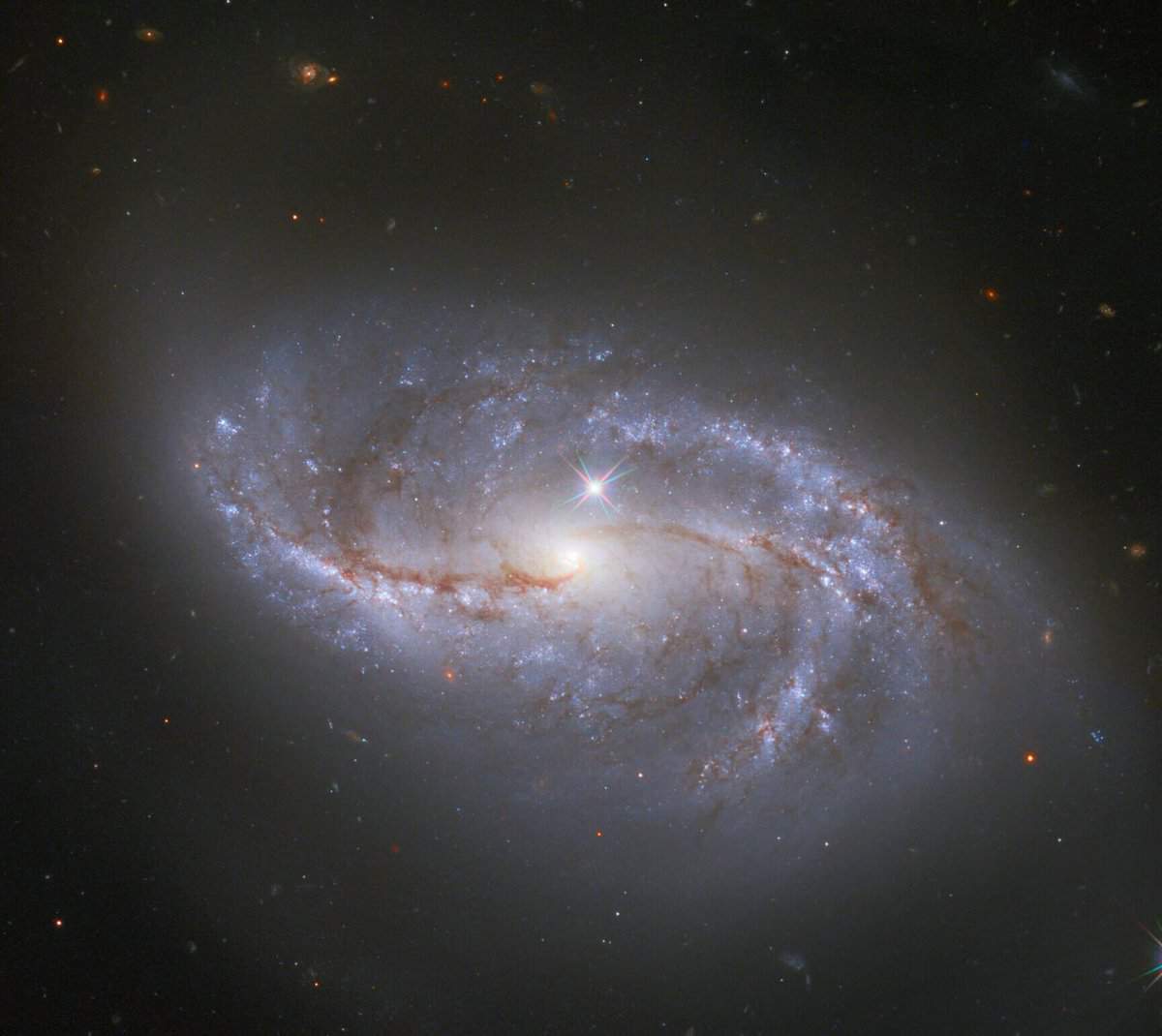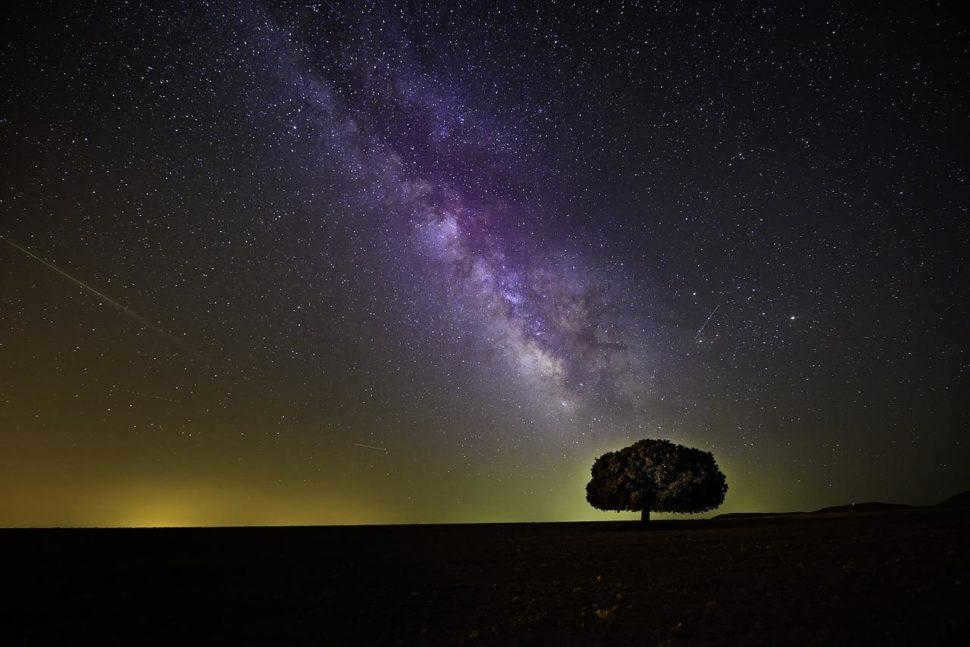
Planet Earth and the planets of our solar system are a part of a galaxy known as the Milky Way. The Milky Way Galaxy, along with countless other galaxies, comprises the vast Universe. The Universe is the entirety of the material world, existing without any spatial boundaries, enduring eternally, and exhibiting an infinite array of forms throughout its evolution.
The term “galaxy” derives from the ancient Greek word “galaktikós”. The ancient Greeks employed this term to describe a “milky ring”, which was the way they depicted the celestial phenomenon visible in the nocturnal sky.
Today, it is customary to indicate the Milky Way Galaxy when the word “Galaxy” is capitalized in scientific literature.
A galaxy refers to a collection of stars, star clusters, interstellar gas, interstellar dust, and a type of matter known as dark matter, as well as planets.
All these cosmic objects are interconnected through gravitational forces, which is why the components of a galaxy are considered as a distinct system.
The Milky Way is a galaxy that encompasses planet Earth, the Sun, the planets of our solar system, and individual stars that are visible in the night sky without the need for special devices, i.e., with the naked eye.
Structure and primary attributes
Our galaxy possesses several captivating and one-of-a-kind qualities, which you can acquaint yourself with in the following sections:
The magnitude of the galactic disk
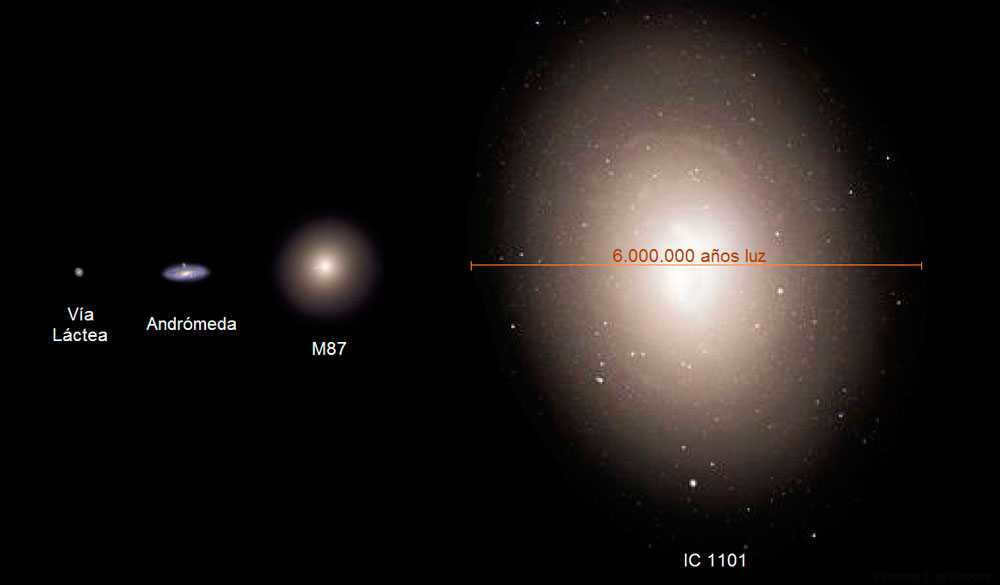
The Milky Way is classified as a disk-shaped galaxy. Scientists determine the size of the galaxy based on its geometric properties. The diameter of the disk is estimated to be around 30,000 parsecs, which is roughly equivalent to 100,000 light-years or one quintillion kilometers in Earth’s metric system. On average, the thickness of the Milky Way’s disk is about 1,000 light-years.
A study conducted by the Canary Institute for Astrophysical Research in the Canary Islands and Northern European Observatory analyzed data collected from the study of the Milky Way galaxy. The researchers concluded that the diameter of the Milky Way’s disk is approximately 200,000 light-years.
Quantity of celestial bodies in the shape of bright twinkling points

At present, astronomers estimate that there are approximately 0.2 to 0.4 trillion stars within the Milky Way galaxy. The majority of these stars are concentrated within a flat disk shape.
Moreover, the Milky Way is also home to an estimated 0.1 to 0.25 trillion brown dwarfs, which are celestial objects that resemble stars but are only a few tens of times larger in size compared to planets like Jupiter in our own solar system.
The resemblance to stars in brown dwarfs is evident in the continuous occurrence of thermonuclear reactions within both celestial bodies and the subsequent release of heat into outer space. As a result, these celestial bodies, which are structurally and physically similar to stars but vary in size, have been given the name “dwarfs”.
The weight of the galaxy
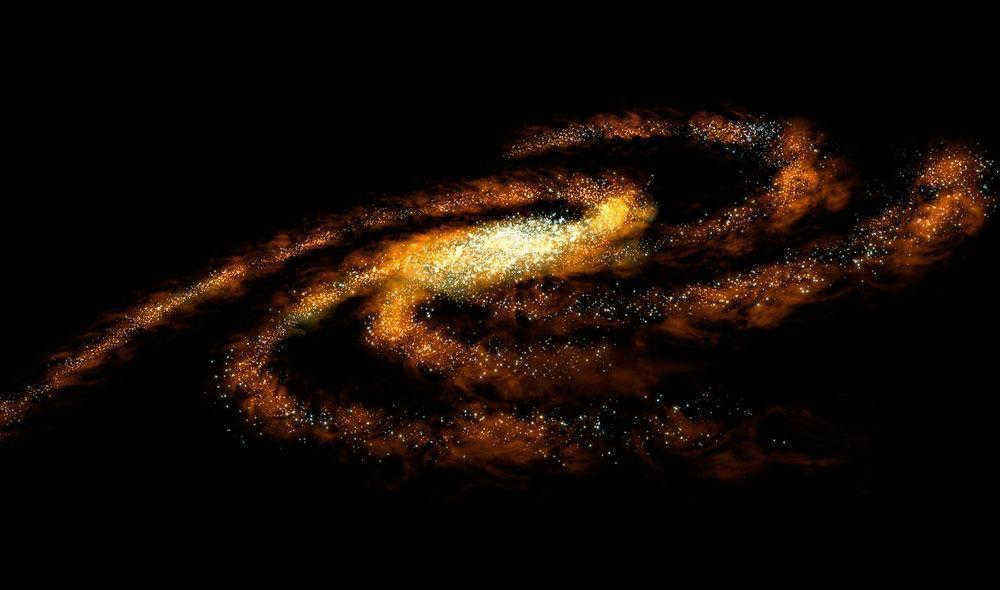
The Milky Way galaxy has posed an unsolved puzzle for modern astrophysics – what is its total mass? Scientists have recently discovered a component of the galaxy known as dark matter, which is still in the early stages of study. It has been found that the mass of this matter makes up a significant portion of the galaxy’s overall mass.
There is still much to learn about dark matter, including its properties, structure, mass, and its impact on celestial bodies within the universe, including the Milky Way. However, it can currently be estimated that the mass of the Milky Way galaxy, at a distance of 130,000 light-years from its center, is approximately 1.5×10^12 times the mass of the Sun.
The scientists compiled this information by merging data from two space missions: the Gaia mission, which launched on December 19, 2013, and used an optical telescope to create a comprehensive star map of the Milky Way, and the Hubble mission, a joint project between NASA and EAC that began orbiting the Earth on April 25, 1990.
Hard Disk
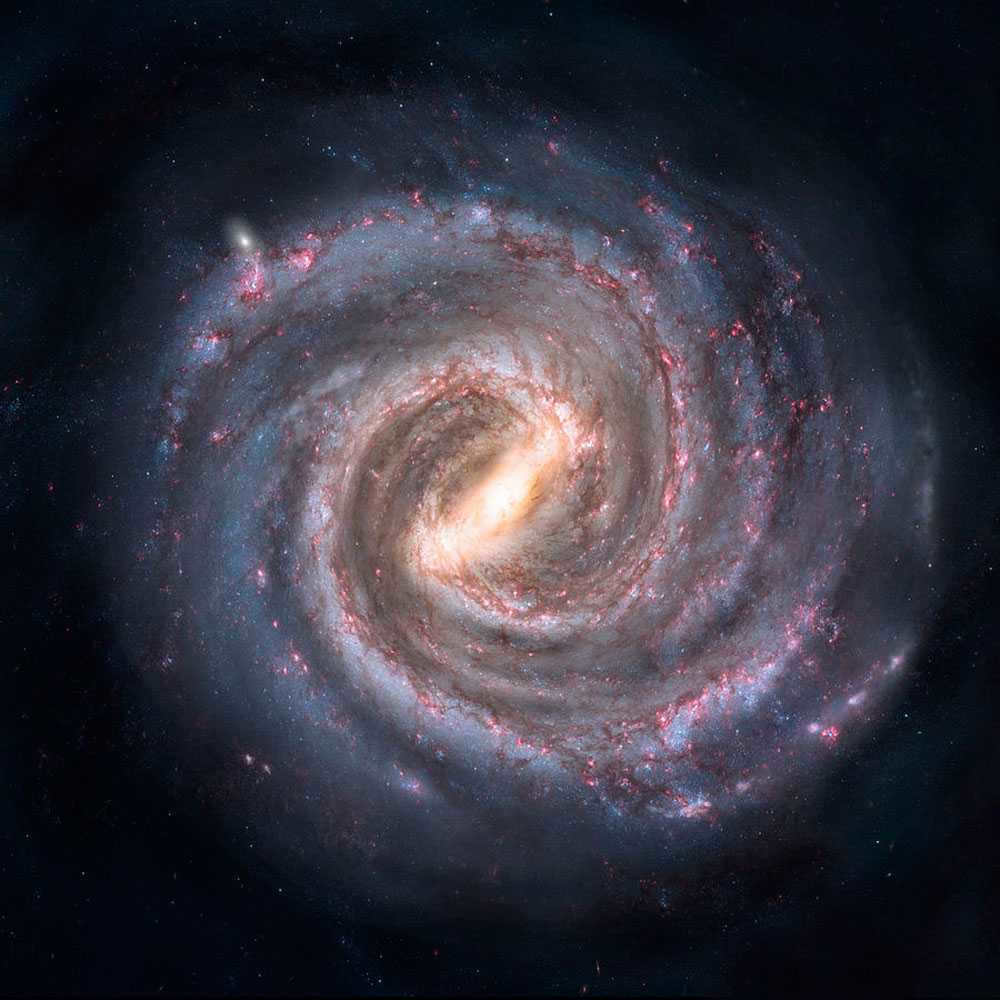
The Milky Way is classified as a spiral galaxy, but it possesses a unique characteristic that was hypothesized by astrophysical scientists in the 1980s. This distinguishing feature sets it apart from other spiral galaxies, as it is a spiral galaxy with a junction.
This theoretical assumption, previously proposed, was substantiated by data collected in 2005 from the Lyman Spitzer Space Telescope. Launched into space on August 23, 2003, this NASA space telescope specializes in gathering infrared radiation and is named after the renowned American astrophysicist, Lyman Spitzer (1914-1997), who extensively researched stellar physics.
Based on the data collected, astrophysicists have determined that the Milky Way possesses a central bar. The bar, which takes the form of a “volume band” or “bar, bar,” is a cluster of luminous stars that runs through the galaxy’s center. Unlike regular spiral galaxies, where the spiral arms originate directly from the nucleus, the arms in these galaxies emerge from the ends of the bar.
At the core of the galaxy, the galactic disk spans a diameter of 0.1 million light-years. This disk rotates at a significantly faster rate than the halo, an unseen sphere that extends beyond the visible part of the galaxy. The halo is composed of stars, hot gas, and dark matter.
The galactic disk has a rotational velocity of zero at its center, but this velocity increases as you move further away from the center. When you reach a distance of 2000 light-years from the disk, the rotational speed is already 240 km/s. Astrophysicists have observed a significant increase in rotation speed in this section of the Galaxy, followed by a slight decrease. However, the speed then increases again and reaches a value of 240 km/s, which remains relatively constant with a small difference.
Studying the rotation of the galactic disk has allowed astrophysicists to estimate its mass, which is approximately 150 billion solar masses.
If we take into account the plane of the Galaxy’s disk, we can observe a concentration of youthful stars and star clusters near the plane, which create what is known as the flat component. A considerable portion of these stars possess high luminosity and high temperature (hot stars).
Similar to the arrangement of such stars and their clusters, the majority of the Milky Way’s gas is concentrated near the disk plane. The uniqueness of the gas distribution is irregular, resulting in the creation of numerous gas clouds: colossal ones that extend for several thousand light-years and diminutive ones that are significantly smaller in size (no larger than 3.2 light-years).
The essence
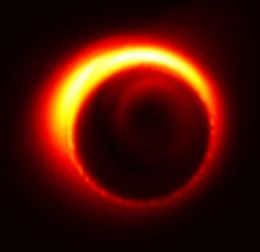
The galactic center, located in the central part of the Milky Way Galaxy, stands out for its unique properties that set it apart from other regions of the Galaxy. Spanning approximately 6400 light-years in diameter, this area serves as a “space laboratory” for scientists studying the physical processes of our galactic system. It is here that the fascinating phenomena of star formation continue to occur, making the galactic center a hub of ongoing research.
The core of our Galaxy, where the condensation (densification) of our stellar system began billions of years ago, is located here. The distance from the Sun to the center of the Galaxy is about 3,000 light years.
In the center of the Galaxy, scientists believe that there is a black hole called Sagittarius A*. It has a mass of approximately 4,000,000 solar masses and is a supermassive galactic object. According to scientists, the second largest black hole, which is of medium mass (ranging from 1 to 10 thousand solar masses), is located here and revolves around this supermassive black hole. The medium-mass black hole completes one revolution in approximately 100 Earth years.
The researchers have discovered that, in addition to these two entities, the galactic core is also home to several thousand smaller black holes in terms of mass and size. Each black hole generates its own gravitational field, with the strength of this field being directly proportional to the mass and size of the black hole.
When combined, the black holes in the galactic core produce an extremely powerful gravitational field. This collective force influences the movement of nearby stars, keeping them in their designated orbits. Scientists have observed that these stars, under the influence of such a strong gravitational field, follow unconventional trajectories characterized by distinctive depressions and bulges.
It is worth mentioning that scientists, based on their examination of our own stellar system, propose that a galaxy of this nature likely contains an exceptionally massive black hole at its center.
The Arms of the Milky Way
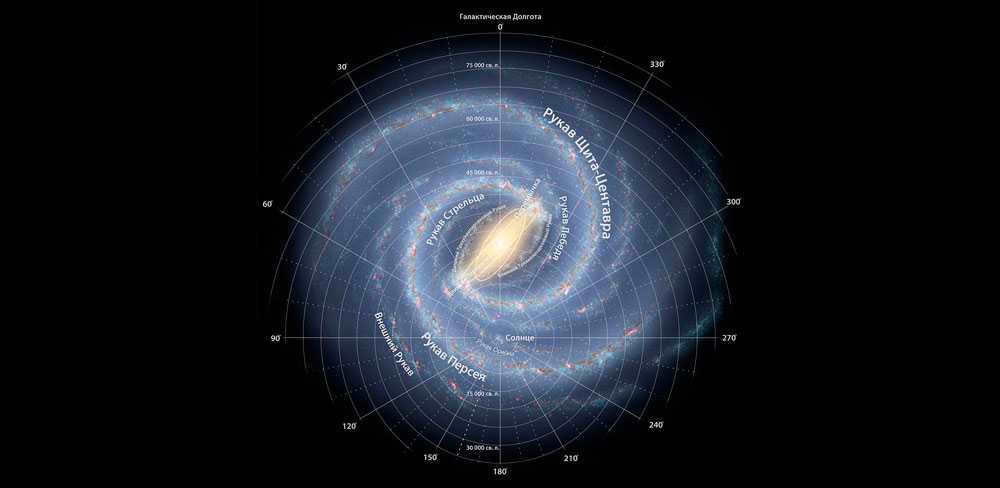
A galactic limb is a component that bears a resemblance to the limb (or branch) of a spiral-shaped galaxy. These structural elements are composed of stellar dust and gas, along with young stars and their clusters.
The scientists have discovered that the spiral limbs possess a characteristic known as prolonged longevity, meaning that these structural galactic elements endure for a significant period of time, rather than dissipating into the surrounding space in a relatively short timeframe.
This deduction is based on the opposite assumption: if we were to hypothesize that galactic limbs exist for a brief duration, then it would logically follow that the Universe would be dominated by “limbless” (non-spiral) types of galaxies. However, this contradicts the observations of galaxies in the Universe, as spiral objects are the prevailing type of galaxies.
The formation and development of galactic arms is attributed to the instability within the galactic disk, which causes matter to “break away” and form spiral-shaped branches as it rotates. These branches are known as density waves.
Galactic spiral arms exhibit several observable characteristics:
- There is a twofold increase in the concentration of young stars within these structural elements compared to the galactic disk.
- The number of old galactic objects (stars) is one-third less than the average found in the galactic disk.
- The amount of stellar gas in the arms is 2-5 times greater than the gas in the surrounding regions.
- There is a significant presence of opaque stardust.
- The objects within the galactic arms consistently deviate from the circular velocity in their rotational motion.
It is an intriguing fact that in the case of a spiral galaxy with a junction, stars within the spiral galactic arms orbit in a circular manner, displaying minimal deviations from a perfect circle.
The galactic arms are situated within the galactic disk’s plane. Our solar system, located on the Orion arm of the galaxy, is proximate to the plane of the Milky Way. The distance between the Sun and the Galaxy’s center measures 27,000 light years.
Given the Sun’s position within its planetary system, visual observation of the Galaxy’s arms from our solar system is not possible. Additionally, the vastness of space distances renders current human technology inadequate for observing our Galaxy “from the outside.”
Thus, the shape of galactic arms has been under investigation by scientists who have been observing outer space for molecular gas carbon monoxide (CO). Through their analysis, the researchers have identified that our Milky Way galaxy consists of two arms. These arms originate in the inner section of the Milky Way at the bar junction.
Additionally, astrophysicists have deduced that the inner part of the galaxy contains two more arms. These arms, combined with the initial pair, form the structure of the four arms of the Milky Way galaxy in its outer section, where the line of neutral hydrogen is located.

The phenomenon known as the galactic halo, derived from the Greek word “halos” meaning circle or disk, refers to the presence of circles, arcs, columns, and spots of light that can be observed around or near the disks of stars, such as our own yellow dwarf star, the Sun, and planets like our Earth’s satellite, the Moon. These visual effects are caused by the refraction and reflection of light by particles of matter in space. In the case of galaxies, these refractions and reflections of light primarily correspond to the stars within them.
The Milky Way, our own galaxy, possesses a halo that takes on a spherical shape and extends beyond the boundaries of the galaxy for a distance of 10 light years. This halo surrounds the disk of the Milky Way, and it is composed of old stars and globular clusters. Nearly 90% of these celestial objects are situated at distances of up to 100 thousand light years from the galactic center.
Research on the halo continues unabated, and recent discoveries have unveiled multiple globular clusters located 200,000 light-years away from the core of our Galaxy. The Milky Way’s halo is composed of predominantly ancient, faint stars with low mass, creating a homogeneous composition.
The spherical halo of the Milky Way harbors cosmic entities that are estimated to surpass 12 billion years in age. This age is widely considered to be the age of the Milky Way itself.
In contrast to the disk of the Galaxy, which contains copious amounts of gas and dust, the spheroidal halo is devoid of cosmic dust and gas, allowing visible light to freely traverse and be observed.
Within the Milky Way Galaxy, there exists a highly active process of star formation occurring in the disk. The spiral arms of the Milky Way, areas with a high concentration of matter, are particularly prolific in star formation. Conversely, in the halo, the process of new star formation has ceased.
Contemporary researchers propose a theory suggesting that the primary mass of the Milky Way galaxy consists of dark matter, which, in turn, forms a massive halo of dark matter estimated to range from 600 to 3000 billion solar masses.
Regarding the unique movement patterns of the Milky Way halo, scientists have currently determined that the constituent stars and star clusters move in relation to the center of the Milky Way, following significantly elongated orbits.
The halo is made up of stars that have their own individual movements, which can be somewhat chaotic. This means that neighboring stars may have velocities that are very different from each other. Despite this, the overall motion of the halo is consistent and occurs at a slow rotational speed.
Brightness

The overall luminosity of a body is commonly understood as the measure of the total light flux emitted by a unit of the source surface.
In the field of astrophysics, the term “stellar luminosity” is employed to refer to the power of light emission from a celestial object. Typically, the luminosity of stars is defined with respect to the luminosity of the Sun. Likewise, this concept is applied to galaxies. In this case, we are discussing the total (full) luminosity of the Milky Way. Astrophysicists estimate this value to be equivalent to 2×10^10 solar luminosities.
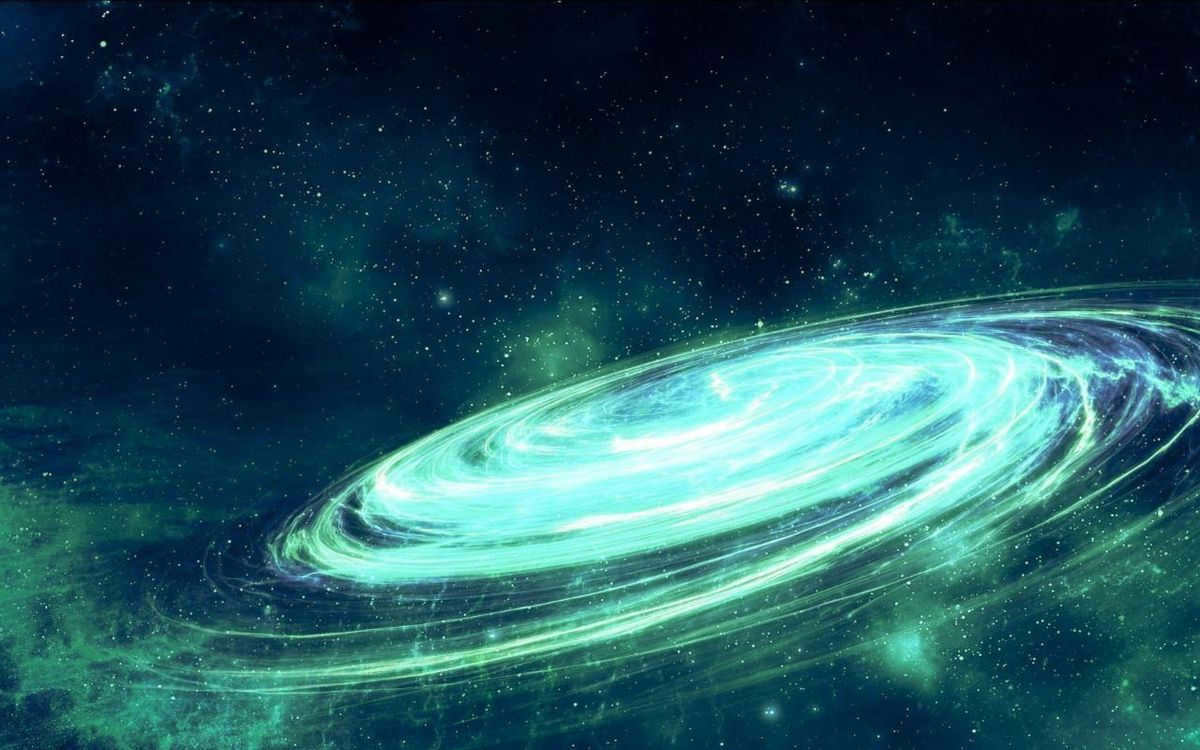
The Milky Way Galaxy exhibits two types of movement. The constituents of the galactic system constantly revolve in relation to the galactic center.
As a collective entity, the galactic system travels through outer space in relation to the ancient radiation, moving at a velocity of approximately 620 km/sec. The direction of the Milky Way’s motion as a unified system is aimed towards the constellation Hydra.
Discovery History
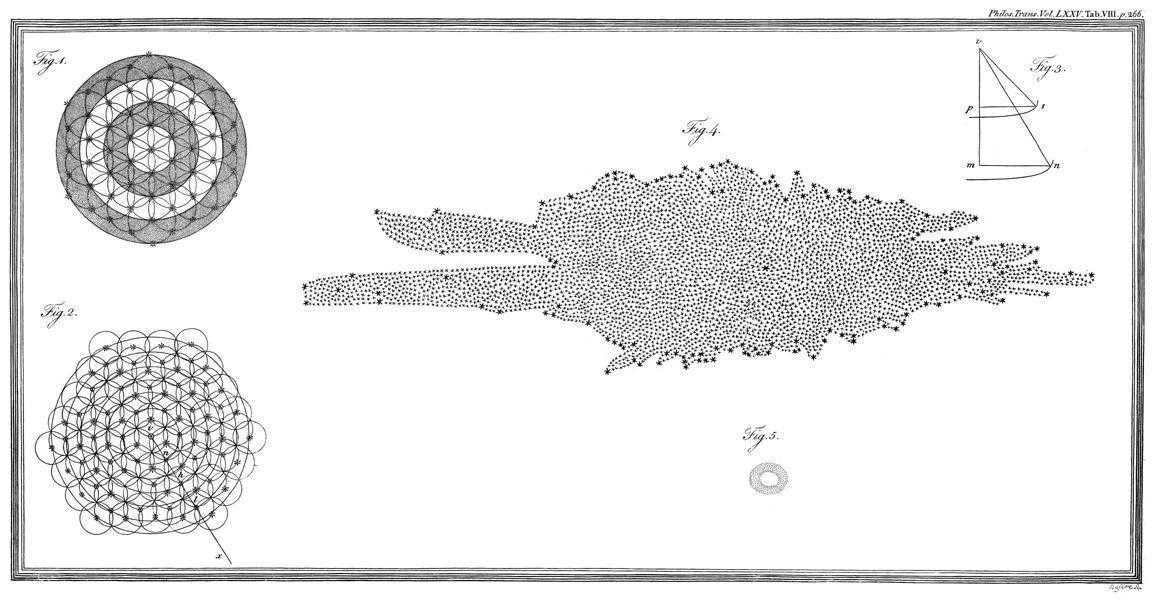
The discovery of the Milky Way galaxy and the existence of multiple galaxies in the universe is closely linked to the accomplishments of renowned scientists. These individuals include:
- William Herschel (1738 – 1822), a German-born British astronomer, who made significant contributions to the field by discovering the planet Uranus, as well as infrared radiation, and conducting extensive research on deep space;
- Immanuel Kant (1724 -1804), a German philosopher, who proposed the scientific hypothesis of stellar nebulae;
- Harlow Shapley (1885 – 1972), an American scientist, who extensively studied variable stars in the Milky Way and other galaxies. He discovered a substantial number of variable stars in globular star clusters and conducted in-depth research on the structure of the Milky Way galaxy;
- Ernst Epick (1893 – 1985), an Estonian astronomer-astrophysicist, who conducted comprehensive studies on spiral nebulae.
- The field of astronomy has been developed over time through careful observations of the sky. Based on these observations, scientists have sought to comprehend the organization of the Universe.
- The subsequent chain of logical reasoning served as the foundation for understanding the structure of the Universe: the Moon orbits the Earth, creating a planet-satellite system. Similarly, other large planets in our solar system have their own satellites and form planet-satellite systems. Therefore, the Earth and other planets revolve around the Sun, comprising the Solar System. This leads us to question whether the Sun, along with the planets of the Solar System, is part of a larger system.
William Herschel conducted the first comprehensive scientific investigation into this matter. He meticulously counted stars in various regions of the sky. Based on his astronomical observations, W. Herschel made a remarkable discovery – a prominent circle in the sky that effectively divides it into two equal parts. The concentration of stars along this circle is the highest.
Another significant finding stemming from W. Herschel’s observations is that the region of the sky closer to this circle is home to a greater number of stars, with the number gradually decreasing as distance increases. This significant circle, initially identified by William Herschel, later became known as the galactic equator. Most importantly, it is along this circle that the Milky Way galaxy is positioned, with the stars being part of a colossal system that is flattened towards the galactic equator.
Immanuel Kant, a renowned philosopher from Germany, made significant contributions to our understanding of the universe’s structure. He put forward the hypothesis that individual nebulae could actually be galaxies, such as our very own Milky Way.
In the 1920s, Kant’s idea received conclusive evidence. During that time, two exceptional astrophysicists, Ernst Epic and Edwin Hubble, managed to measure the distance to several spiral-shaped nebulae and, most importantly, demonstrated that these celestial bodies were too far away to be part of our Milky Way Galaxy.
The Positioning of the Solar System, the Sun, and the Earth within the Milky Way Galaxy
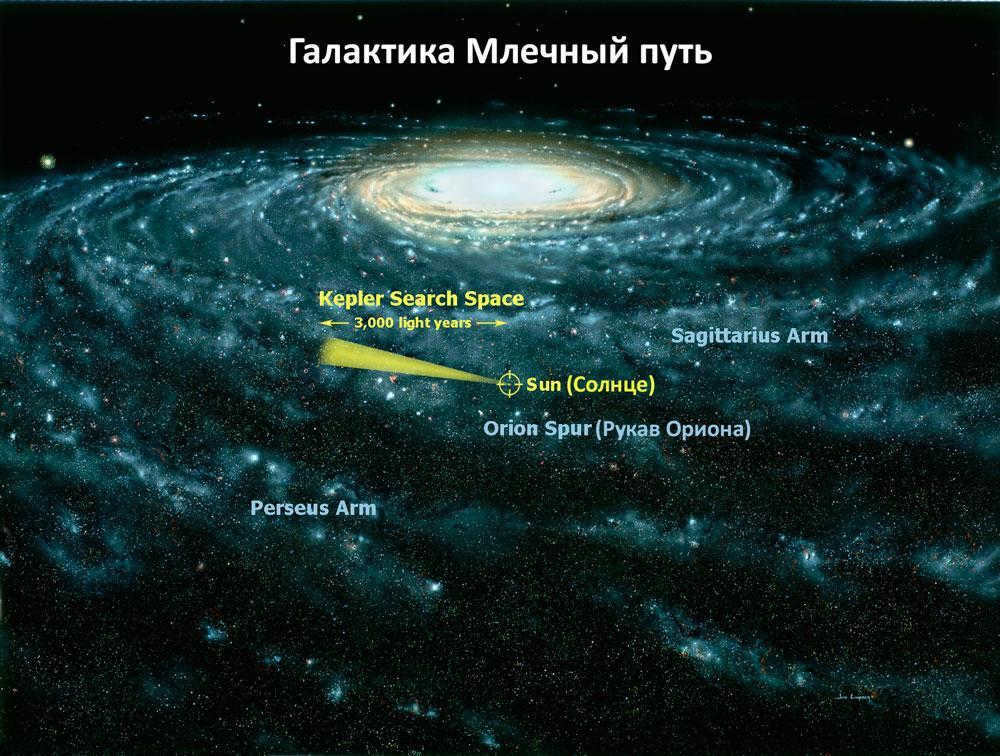
In the course of their investigation into our galaxy, astrophysicists have made a preliminary calculation of the distance between our star, the Sun, and the junction of the galaxy. This distance is estimated to be approximately 3.5×10^4 light-years.
Recent astronomical observations have revealed that the Sun will be situated about 2.7×10^4 light-years away from the galactic center.
The discrepancy in the numerical data has led scientists to a clear conclusion – the Sun is positioned closer to the outer edge of the galactic disk rather than the center of the galaxy.
It’s a simple task to calculate that our beloved planet Earth has completed no more than 30 full revolutions around the epicenter of the magnificent Milky Way throughout its existence.
The Milky Way Galaxy boasts glorious spiral arms, with scientists having successfully traced two of them at a distance of approximately 3,000 light years from our precious Sun. These galactic arms can be observed within the boundaries of two constellations, known as Sagittarius arm and Perseus arm. Positioned almost perfectly between these celestial marvels, our Sun radiates its light and warmth.
In addition to the Sagittarius and Perseus arms, our humble solar system experiences the presence of another arm – the Orion arm. This particular galactic arm may not be as prominent as its counterparts, but it is regarded as a branch of one of the principal spiral arms of the magnificent Milky Way.
Researchers have made a discovery that within the spiral arms of our galaxy, there exist incredibly intense phenomena that result in an immensely powerful form of radiation capable of causing the demise of any living organism. Unfortunately, the Earth’s atmosphere is unable to shield against this type of radiation.
Fortunately, our planet is situated in a relatively tranquil region of the Milky Way and has not experienced the devastating effects that this radiation can bring upon all life forms.
It is plausible that this favorable positioning is the reason why life originated on Earth and why there are conducive conditions for its sustenance.
Community
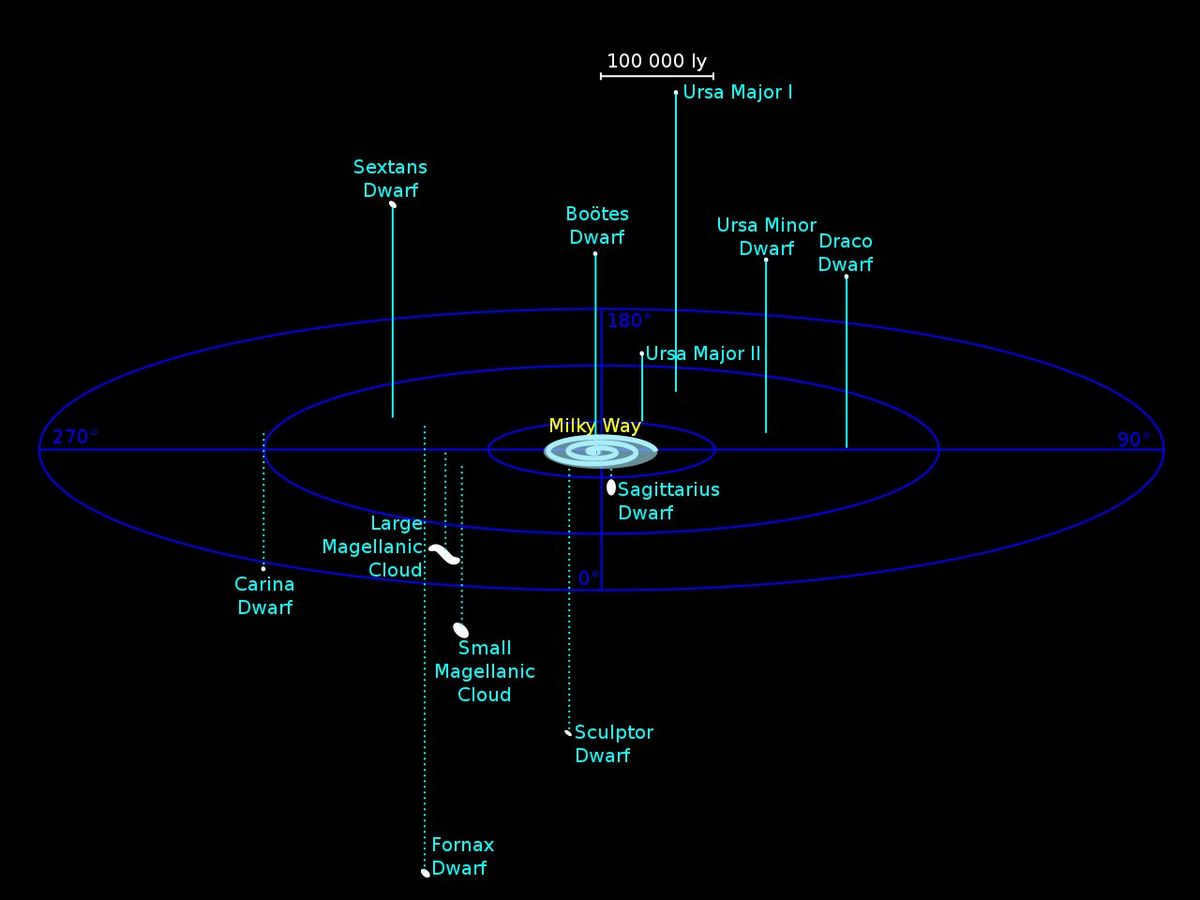
Aside from examining the Milky Way Galaxy itself, there is a fascination with exploring the vicinity of our solar system.
During this phase of galactic investigation, the primary objective of scientists is to identify other dwarf galaxies that may have a connection to our own.
Initially, astrophysicists strive to gather information about the satellites of the Milky Way. In 2015, such data was collected, leading to the discovery of nine new satellites orbiting our galaxy.
Research is also being conducted on the topic of dwarf galaxies that may have been assimilated by our own galaxy. One example is the Omega Centauri galaxy, a globular star cluster located in the Centaurus constellation. It is one of the closest clusters to Earth and also happens to be the largest one known.
Ongoing research is being conducted to discover new companion galaxies to the Milky Way.
The Future of Galaxy Development
Our knowledge of the evolution of our galaxy is continuously expanding. The following events have shaped its genesis and development:
- Over ten billion years ago, the Milky Way experienced a collision with a galaxy known as Kraken.
- Following this event, the Milky Way merged with the large galaxy Gaia-Enceladus, resulting in the formation of the Milky Way’s blown-out thick disk.
- The scientists suggest that a galaxy, which could be the precursor of the Inner Galaxy Structure (IGS) system, may have collided with the Milky Way galaxy around ten billion years ago. This conclusion is based on the observation that one-third of the stars in the Milky Way’s halo belong to this system.
- Astronomers have found evidence of at least twelve collisions between our galaxy, the Milky Way, and other galaxies throughout its existence.
Regarding the future of our galaxy, scientists make the following assumptions:
- There is a possibility of our galaxy colliding with other galaxies, including the larger Andromeda galaxy. However, more accurate predictions cannot be made at this time, as scientists have not yet determined the speeds of the galaxies that may collide with the Milky Way.
As per this model, in four billion years, our galaxy will collide with the Large and Small Magellanic Clouds. And then, one billion years after that event, the Milky Way will be engulfed by the Andromeda Nebula galaxy.
Currently, humanity possesses a considerable amount of knowledge about our Milky Way galaxy. However, it is evident that this knowledge is only a minuscule fraction in the vast expanse of knowledge, as vast as our Universe.
The Milky Way is a spiral galaxy that spans an area of 100,000 light-years, housing the Solar System.
If you find yourself in a location far from the city, where darkness prevails and you have an unobstructed view of the starry sky, you might notice a faint strip of light. It is a strip adorned with millions of tiny bright lights and glowing auras. You are gazing at the stars of the Milky Way galaxy.
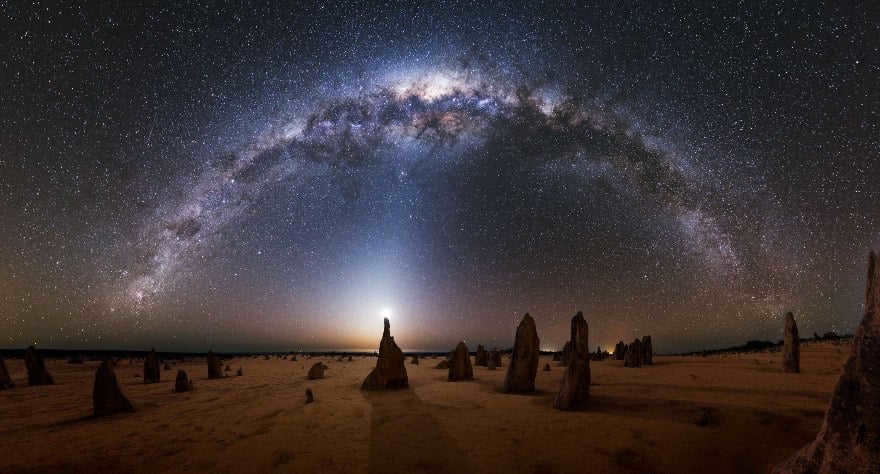
So, what exactly is it? Well, the Milky Way happens to be a spiral galaxy with a central hub, where our very own Solar System resides. It’s hard to label our galaxy as something entirely unique, considering the countless billions of other galaxies in the vast universe, many of which bear striking similarities.
Fascinating information
- The formation of the Milky Way began as a result of the clustering of dense regions following the occurrence of the Big Bang. The initial appearance of stars took place within globular clusters, which still exist today. These clusters are home to the oldest stars within our galaxy;
- Over time, the galaxy has expanded its boundaries by absorbing and merging with other galaxies. Presently, it is in the process of acquiring stars from the Sagittarius Dwarf Galaxy and the Magellanic Clouds;
- The Milky Way is constantly moving through space at an acceleration of 550 km/s in relation to relic radiation;
- At the center of the galaxy lies a supermassive black hole known as Sagittarius A*. This black hole has a mass 4.3 million times that of the Sun;
- Gas, dust, and stars orbit the galactic center at a rate of 220 km/s. This stable rate suggests the presence of a dark matter shell surrounding the galaxy;
- The expected collision between the Andromeda galaxy and the Milky Way is estimated to occur in approximately 5 billion years. Some scientists propose that the Milky Way is actually a binary system consisting of a large spiral galaxy;
Detection and Naming
Our galaxy, the Milky Way, derives its interesting name from its hazy appearance that resembles a milky pathway. The name has ancient origins and is translated from the Latin term “Via Lactea”. This name is mentioned in the work “Tadhira” by Nasir al-Din Tusi, where it is described as “consisting of a multitude of small stars closely clustered together, creating a spotted appearance that resembles the color of milk”. While we cannot capture a direct photograph of our galaxy, there are similar structures and accurate data regarding its central region and spiral arms that provide us with an understanding of its overall appearance.
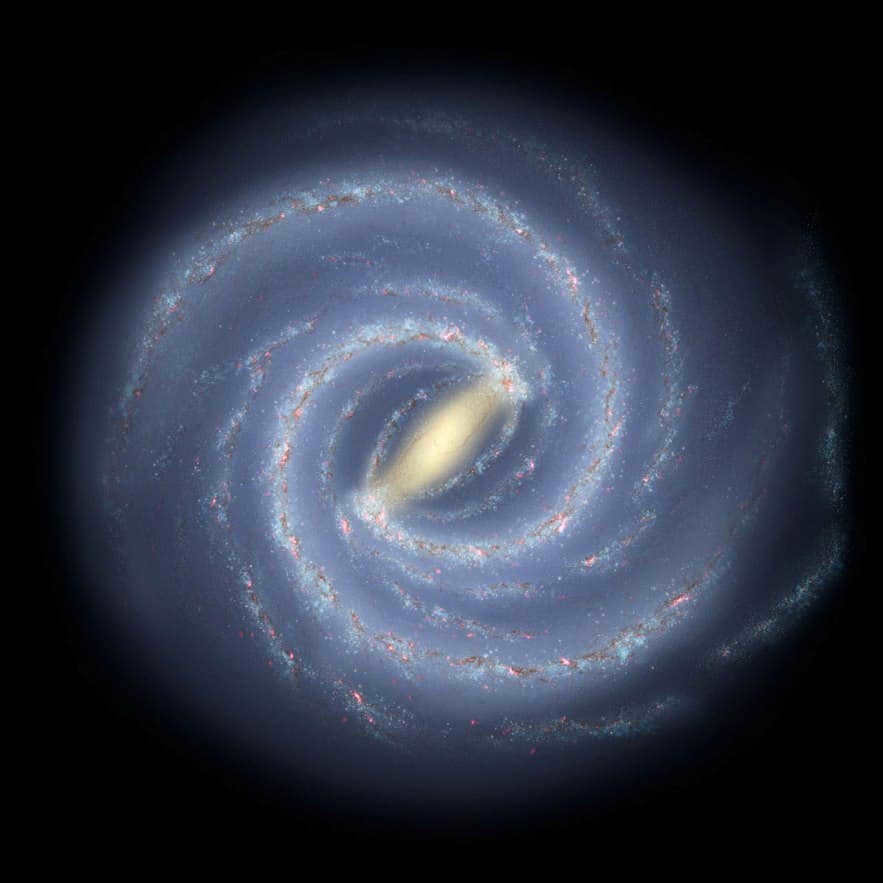

An artistic representation of the Milky Way as observed from a vantage point above the northern pole.
In 1610, Galileo Galilei revolutionized our understanding of the Milky Way. Prior to his groundbreaking observations through the telescope, scientists could only speculate about the abundance of stars within our galaxy. Galileo’s observations revealed a startling truth: the Milky Way is teeming with far more stars than we had previously imagined, all of which are integral components of our galaxy.
The situation underwent a transformation in the 1920s. Edwin Hubble successfully persuaded that what we were observing were not spiral nebulae, but rather distinct galaxies. This breakthrough enabled us to finally comprehend the configuration of our own galaxy. It became evident that our galaxy is a spiral one with a nucleus. Take a look at the video to delve into the structure of the Milky Way galaxy, examine its globular clusters, and discover the astounding number of stars it harbors.
Location
The Milky Way can be easily spotted in the night sky because of its distinctive wide and elongated band of white light, resembling a milky pathway. Interestingly, this star cluster has been visible since the formation of our planet. In fact, it is the galactic center of our galaxy.
Spanning a diameter of 100,000 light-years, the Milky Way exhibits a central bulge with four prominent spiral arms emanating from it, giving it a characteristic appearance. This type of galaxy represents two-thirds of all galaxies in the universe.
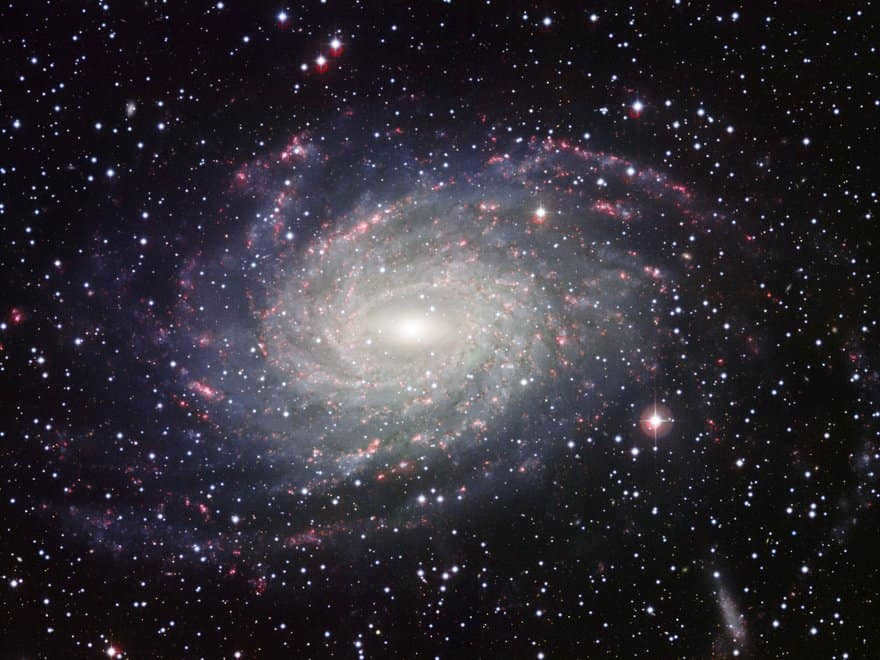

This visual representation showcases a galaxy named NGC 6744, which bears a resemblance to our very own Milky Way.
Unlike the familiar spiral shape that we are accustomed to, this particular galaxy exhibits a distinctive configuration, featuring a central rod accompanied by two branching arms. In comparison, our galaxy possesses two primary arms as well as two secondary arms, with our solar system residing within the Orion arm.
The Milky Way is far from being motionless and instead undergoes a rotational movement in space, carrying along all the celestial objects within it. Specifically, our solar system is in constant motion around the galactic center at an astonishing speed of 828,000 km/h. However, due to the immense size of the galaxy, a complete orbit takes a staggering 230 million years to complete.
Within the spiral arms, an abundance of dust and gas accumulates, creating ideal conditions for the birth of new stars. These arms extend outward from the galactic disk, spanning an impressive distance of approximately 1000 light-years.
In the core of the Milky Way, a dense accumulation of dust, stars, and gas creates a bulge that restricts visibility. As a result, only a fraction of the galactic stars are observable. The limited visibility is primarily attributed to the obstructive presence of a dense haze of gas and dust.
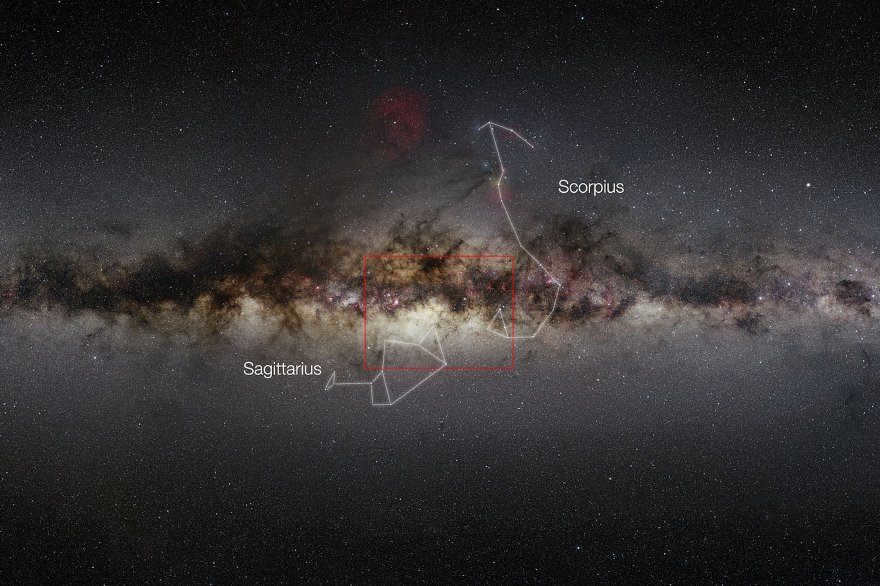

This particular infrared image provides a glimpse into the expansive nature of the Milky Way.
Situated at the very core of this galactic marvel is an immensely massive black hole, boasting a mass billions of times that of our Sun. Initially, it may have been considerably smaller, but its voracious appetite for dust and gas has facilitated its growth over time. This celestial entity is an extraordinary consumer, as it has been known to devour even entire stars. Naturally, it remains invisible to the naked eye, yet its gravitational pull can be detected and monitored.
Encircling the galaxy is a halo of scorching gas, housing a collection of ancient stars and globular clusters. Stretching across hundreds of thousands of light-years, this halo comprises a mere 2% of the stars found within the galactic disk. And let us not overlook the presence of dark matter, which accounts for a staggering 90% of the galactic mass.
Upon observation, one can perceive that the Milky Way effectively partitions the expanse of the cosmos into two hemispheres that are nearly indistinguishable from one another. This indicates that our celestial system is situated in close proximity to the plane of our galaxy. It becomes apparent that the luminosity of the galaxy is relatively dim owing to the concentration of gas and dust within the disk. This not only obstructs our view of the central region of the galaxy, but also hinders our ability to discern what lies on the opposite side. In the lower diagram, one can readily identify the central region of the Milky Way galaxy.

The structure of the Milky Way: a top-down perspective
If you were to venture outside the boundaries of the Milky Way and observe it from a vantage point above, you would behold a magnificent spiral with a prominent bar at its center. This awe-inspiring cosmic structure spans an astonishing distance of 120,000 light-years and boasts a width of 1,000 light-years. For a considerable period of time, scientists believed that there were four distinct arms in the Milky Way, but recent research has revealed that there are in fact only two: Shield-Centauri and Sagittarius.
The formation of these arms can be attributed to the presence of dense waves that swirl around the galaxy, exerting a gravitational force that compresses and molds the surrounding dust and gas. This process serves as a catalyst for the vigorous birth of new stars, a phenomenon that is observed in all galaxies of a similar nature.
If you’ve ever seen pictures of the Milky Way, they’re actually just artistic interpretations or images of other similar galaxies. It’s hard for us to truly grasp what it looks like since we’re situated within it. It’s like trying to describe the exterior of a house when you’ve never left its walls. But of course, we can always peer out the window and observe the neighboring structures. In the image below, you can easily identify the position of our solar system within the vast expanse of the Milky Way galaxy.
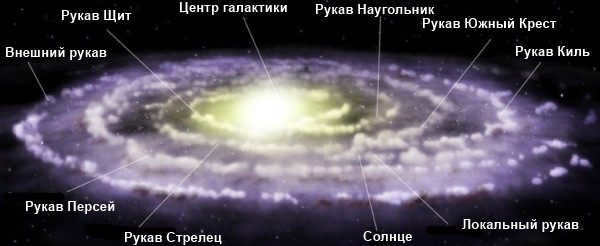
The arm system of the Milky Way
Observations conducted both on the ground and in space have provided evidence that the galaxy contains a staggering 100-400 billion stars. It is estimated that each star has the potential to host a planet, resulting in the Milky Way Galaxy potentially having hundreds of billions of planets. A remarkable 17 billion of these planets are believed to share similar size and mass characteristics with Earth.
Around 90% of the mass in the galaxy is comprised of dark matter. The nature of dark matter still remains a mystery, as it has never been directly observed. However, its existence is inferred from the rapid rotation of galaxies and other gravitational effects. Dark matter plays a crucial role in preventing galaxies from collapsing under their own rotation. For more information on the stars within the Milky Way, please watch the accompanying video.
The location of our solar system within the Milky Way galaxy
Situated 27,000 light-years away from the galactic center, our solar system resides within the Orion arm, nestled between the two primary arms. Despite its distant position, there is no cause for concern, as the central region is home to a formidable supermassive black hole known as Sagittarius A*.
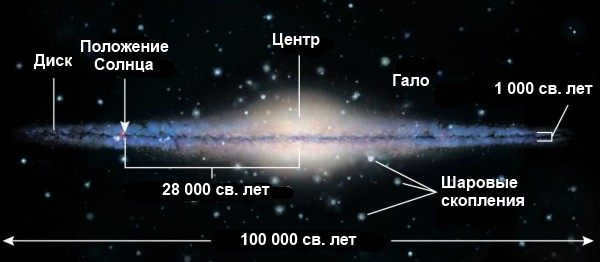
The arrangement of the Milky Way: a profile perspective
It requires 240 million years for our Sun’s celestial body to complete a full revolution around the galaxy (a cosmic year). This fact is astonishing, as it means that the last time our Sun was at this location, dinosaurs were inhabiting the Earth. Throughout its entire lifespan, our star has executed roughly 18-20 close passes by the Milky Way. This implies that it came into being 18.4 cosmic years ago, while the galaxy itself is 61 cosmic years old.
The Collision of the Milky Way and Andromeda Galaxies
In addition to its rotation, the Milky Way Galaxy also experiences motion within the vast universe. However, even in the vastness of space, collisions are inevitable.
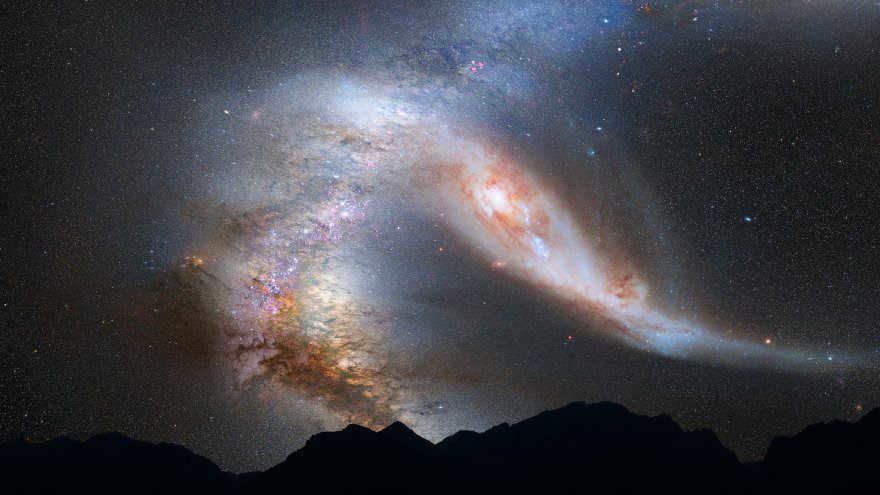
A glimpse into the impending collision between our very own Milky Way galaxy and the Andromeda galaxy has been captured. According to estimates, this cosmic encounter is expected to take place in approximately 4 billion years. The two galaxies are hurtling towards each other at an astonishing speed of 112 kilometers per second. Once the collision occurs, a magnificent spectacle of star formation will ensue. However, it’s worth noting that Andromeda has a rather chaotic history of cosmic encounters, evident from the presence of a large dust ring at its center, a result of previous galactic collisions.
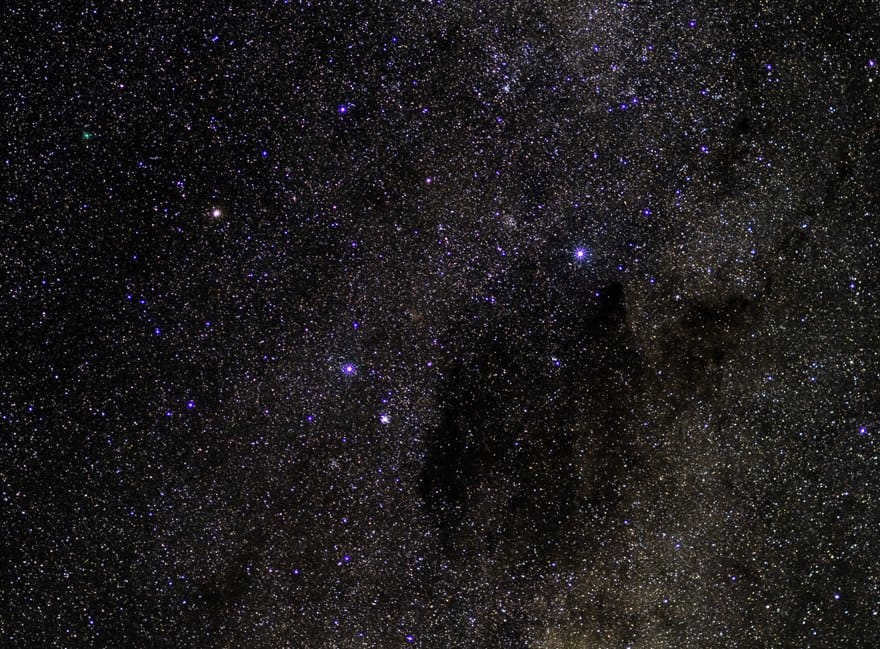
The Coal Sack Nebula is depicted in the image. Alpha Centauri and Beta Centauri are situated on the left side, while the Southern Cross can be seen on the right.
However, there is no need for Earthlings to be concerned about this future occurrence. By that time, the Sun will have already undergone a supernova explosion, leading to the destruction of our planet.
What lies ahead for the Milky Way?
Scientists believe that the Milky Way is the product of a merger between smaller galaxies. This process is still ongoing, as the Andromeda galaxy is approaching us, which will eventually result in the formation of a massive elliptical galaxy in approximately 3-4 billion years.

A compilation of galaxies can be observed in the Virgo Superscope.
The existence of the Milky Way and Andromeda galaxies is not in solitude, rather they are part of the Local Group, which is also a component of the Virgo Superscope. This vast area, spanning 110 million light years, is home to 100 groups and clusters of galaxies.
If you haven’t had the opportunity to admire your own galactic home, I highly recommend doing so at your earliest convenience. Seek out a serene and unlit location with a clear view of the sky and simply revel in the awe-inspiring collection of stars. Remember that our website features a virtual 3D model of the Milky Way galaxy, allowing you to explore all the stars, clusters, nebulae, and known planets online. Additionally, our star map can assist you in locating these celestial bodies in the sky if you decide to purchase a telescope.
The position and movement of our galaxy, the Milky Way, can be explored from various perspectives:
- The Milky Way is the nearest galaxy to our own.
- The interaction between the Milky Way and the Andromeda galaxy is a fascinating subject of study.
- Understanding the formation process of the Milky Way is a complex scientific endeavor.
- Describing the appearance of the Milky Way poses a challenge due to its vastness and complexity.
- Studying the rotation of the Milky Way provides valuable insights into its dynamics.
- The possibility of a future collision between the Milky Way and another galaxy is an intriguing topic.
- Quantifying the size of the Milky Way is a task that requires precise measurements.
- The dimensions of the Milky Way encompass its various components and structures.
- The diameter of the Milky Way is an important parameter in understanding its scale.
- The mass of the Milky Way is a crucial factor in determining its gravitational influence.
- Mapping the Milky Way helps us visualize its intricate structure.
- Locating Earth within the vast expanse of the Milky Way is a captivating astronomical pursuit.
While artificial intelligence has made significant advancements, it is important to note that it may sometimes provide inaccurate answers. If you are dissatisfied with a response, consider asking your question in a more detailed and specific manner, providing precise parameters.
The Milky Way Galaxy is an immense spiral galaxy composed of billions of stars, planets, gas, and dust clouds. Due to its vast size and intricate structure, accurately determining the number of stars it contains is challenging. Nonetheless, scientists currently estimate that the Milky Way harbors ten trillion stars, equivalent to 10^22 stars.
The count of stars within the Milky Way galaxy can be assessed through various methods. One of the most precise measurements, conducted in 2015 by the Gaia mission of the European Space Agency, yielded a range of 100-400 billion stars. However, this figure serves as a preliminary estimate only. Some researchers contend that our galaxy may host a significantly larger number of stars.
The distribution of stars in the Milky Way is not uniform across its volume. The central region of the galaxy, known as the nucleus, is the most densely populated area. Within this area, there is a vast number of stars and dense star clusters, where stars are closely packed together and even visible to observers on Earth.
The majority of stars in the Milky Way, over 90%, are red dwarfs – small and faint stars that are significantly dimmer and less luminous than the Sun. The remaining ten percent consists of giant, supergiant, and sun-like stars, which play a crucial role in the study of stellar evolution.
The Milky Way’s abundance of stars has turned it into a crucial subject of study and observation for astronomers and astronauts alike. Nevertheless, our galaxy does not hold the title for being the largest in the sky. The universe is an endless expanse, teeming with countless galaxies. Therefore, examining our galaxy merely grants us a glimpse into a minuscule fraction of the boundless array of captivating celestial entities that exist within the universe.
You need to have an account to post a comment.
Feel free to ask any question to our advanced neural network!
Before you can ask a question to our neural network, you will need to log in.
Complete overview, features, and usage of Russian ChatGPT Artificial Intelligence
Exploring the subject of illnesses using reasoning
(Solved) Support was contacted by a user who took a trip from the outskirts. During the journey, there was a significant altercation between the user and the driver. As a result, the driver pulled over and…
(Solved) Information about the execution of all the primary educational modules, including the “Self-management” module, and the “Interaction with Parents (Legal P…” module.
(Solved) Hello! Could you please provide a description for a girl who embodies femininity…
(Solved) What are some effective strategies for a customer service representative to alleviate the frustration of a passenger who had an unpleasant encounter with a disrespectful taxi driver…
(Solved) Can anyone recall any specific episodes from the television show Friends that feature scenes depicting girls engaging in wrestling matches with guys and assuming dominant positions…?
(Resolved) What is the type of the variable ‘markup’ in the code snippet?
(c) ChatGPT in Russian 2023. All rights reserved. If you come across any unauthorized content, please contact [email protected].
Do you have any questions for the neural network?
By clicking on “Register” or “Sign in with Google”, you agree to the Terms of Service, give consent to the processing of your personal data, and confirm that you are at least 18 years old.
Project Administration Feedback
Cookies Usage Notification
Our website, similar to many others, utilizes cookies and other related technologies (such as pixel tags) to provide services that cater to your interests and requirements. Additionally, these technologies enable us to collect statistical and marketing data for the purpose of analyzing and enhancing our services and websites.
By utilizing this website, you give your consent for the implementation of cookies and other related technologies in compliance with this notification.
If you do not agree with the usage of this type of cookie, it is necessary for you to adjust your browser settings accordingly or refrain from using our website.
Please take note that blocking or deleting cookies may result in our website not functioning correctly within your browser.
Cookies that are stored via our website do not contain any information that can be utilized to identify you.
Understanding Cookies and Comparable Technologies
A cookie is a compact text document that is stored on your computer, smartphone, or any other device that you utilize to browse various websites.
Furthermore, certain web pages you access may collect data using pixel tags and web beacons, which are images known as single-pixel (1×1) or blank GIF images.
These cookies can be deposited on your device either by us (referred to as “first-party” cookies) or by other entities (known as “third-party” cookies).
On our website, we employ two varieties of cookies: “session cookies” and “persistent cookies”. Session cookies are transient cookies that remain on your device until you navigate away from the site. Conversely, a persistent cookie lingers on your device for an extended period or until you manually remove it (the duration a cookie stays on your device hinges on the lifespan of the particular cookie and your browser settings).
There are different types of cookies:
Essential. These files are necessary for the proper functioning and utilization of the website’s features. Disabling the use of these files will result in decreased site performance and the inability to use its components and services.
Performance, Efficiency, and Analytics Cookies. These files enable us to analyze visitor interaction with the website, optimize website content, and measure the effectiveness of advertising campaigns by providing information on visitor numbers, duration of use, and any errors that occur.
Functional Cookies. These cookies remember users who have previously visited our website, their individual settings (such as language and region, for example), and preferences. They assist in personalizing website content.
Email Tracking. We may employ technology to monitor whether you’ve accessed, perused, or disseminated certain messages that we’ve sent to your email account. This is done in order to enhance the usefulness of our communications for the user. If you prefer not to receive notifications, you must unsubscribe by clicking on the “Unsubscribe” link located at the bottom of the relevant email newsletter.
Social Media Buttons. These buttons are utilized to enable users to share a link to a social media page or bookmark an email. These buttons serve as links to social media websites that are owned by third parties, who may subsequently collect information about your online activities, including those on our website. To comprehend how these third-party sites utilize your data and how you can decline their utilization or request the deletion of your data, please review the corresponding terms of use and privacy policies.
External Web Services. Occasionally, we utilize external web services on this website. For instance, to exhibit specific components (such as images, videos, presentations, etc.) or to conduct polls. Just like with social media buttons, we are unable to prevent these external domains or sites from gathering data regarding your utilization of the site’s content.
What is the process for controlling cookies?
By default, most internet browsers automatically accept cookies.
You have the ability to modify your browser settings to either block cookies or receive notifications when cookies are being sent to your device (refer to the usage guide for your specific browser). Please note that disabling cookies may impact your browsing experience.
If you use multiple devices and/or browsers to access the internet, it is necessary to adjust the settings on each one.
Concluding Provisions
We reserve the right to modify this Notice periodically at our own discretion.
If you have any inquiries, feel free to reach out to us using the provided contact information on our website.
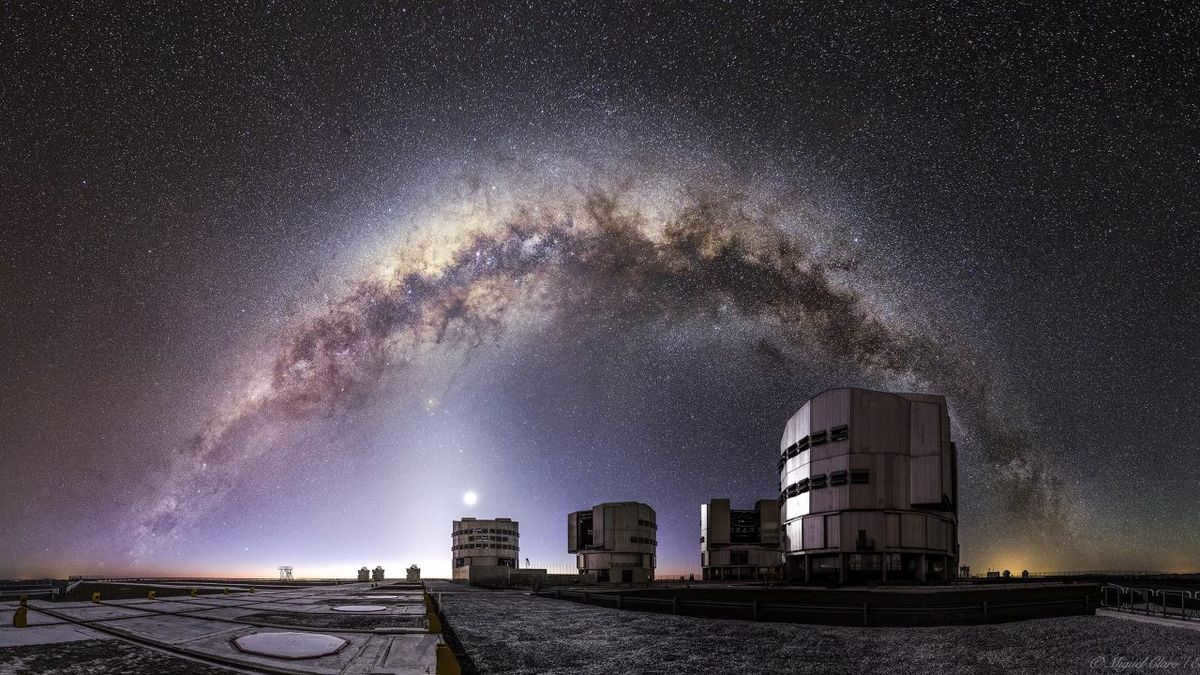

The Milky Way is a galaxy that consists of our Earth, the solar system, and all the other stars that can be seen with the naked eye. However, determining the exact number of stars in the Milky Way is a highly intricate task.
“Counting the stars in the galaxy is not a simple task,” stated David Kornreich, a professor at Ithaca College in New York City. Kornreich is renowned for founding the Ask an Astronomer community at Cornell University.
The Andromeda galaxy, located 2.3 million light-years away from our planet, contains numerous bright stars along with a few variable stars called variable Cepheids, which can only be observed from that distance using telescopes. Detecting a star the size of our Sun would be highly challenging. Astronomers employ various techniques to estimate the number of stars within a galaxy.
Organization of the Milky Way
Astronomers have observed that the Milky Way is categorized as a spiral galaxy with a junction. The majority of the galaxy’s stars are located in the core of the Milky Way. The stellar disk of the galaxy is structured with spiral branches, including two main arms and two smaller arms. These main arms are named the Perseus and Sagittarius arms. The central region of the disk, known as the bulge, is a spherical thickening that is the most dense and compact part of the galaxy.
The presence of gas, dust, and stars obscures our view of the galactic core, which exhibits intense activity and emits radio, infrared, and X-ray radiation. Scientists estimate that the nucleus’s mass exceeds tens of millions of solar masses, suggesting the presence of a supermassive black hole. Additionally, our galaxy contains stars that do not belong to the disk but rather form a spherical structure known as the stellar halo, extending at least 20 kpc in radius. Surrounding the halo is the corona, an outer region of the galaxy that is both rarefied and expansive, spanning 50-60 kpc. The solar system, situated approximately 8 kpc away from the galactic center, resides within one of the secondary arms known as the Orion Arm.
Other articles you may find interesting:
In the past, scientists believed that all the stars in existence were contained within the Milky Way galaxy. However, this perception shifted during the 1920s when astronomer Edwin Hubble made a groundbreaking discovery. By studying a specific type of star known as the cepheid variable, Hubble was able to accurately measure distances in outer space. This pivotal finding led astronomers to realize that there are numerous galaxies scattered throughout the universe, distinct from our own Milky Way galaxy.
The primary method for determining the number of stars in a galaxy is by assessing the galaxy’s mass. The mass is calculated by analyzing the galaxy’s rotation and its spectrum using spectrographs.
As all galaxies are moving away from each other, their light undergoes a redshift, causing the wavelengths of the light to increase with distance, resulting in a shift toward the red end of the spectrum. However, there is a specific region within a rotating galaxy that experiences a more significant “blue-shift” due to its movement towards Earth.
“Before astronomers can make an estimation, they must ascertain the tilt or orientation of the galaxy,” stated Kornreich.
The best method for performing this type of work is known as “long-slit spectroscopy.” In this technique, an elongated object, such as a galaxy, is observed through a narrow, elongated aperture, and the light is refracted using a prism or similar device. This causes the light from stars to be dispersed into the colors of the rainbow.
As a result, certain colors may be absent, creating distinctive “patterns” that resemble the missing elements found in the periodic table. This enables scientists to determine the elemental composition of stars. Each type of star possesses a unique chemical signature that can be observed through telescopes. (This forms the basis of the OBAFGKM sequence used by astronomers to classify stars.)
Any telescope is capable of conducting this type of spectroscopic analysis. Kornreich frequently employs the 200-inch telescope located at the Palomar Observatory of the California Institute of Technology.
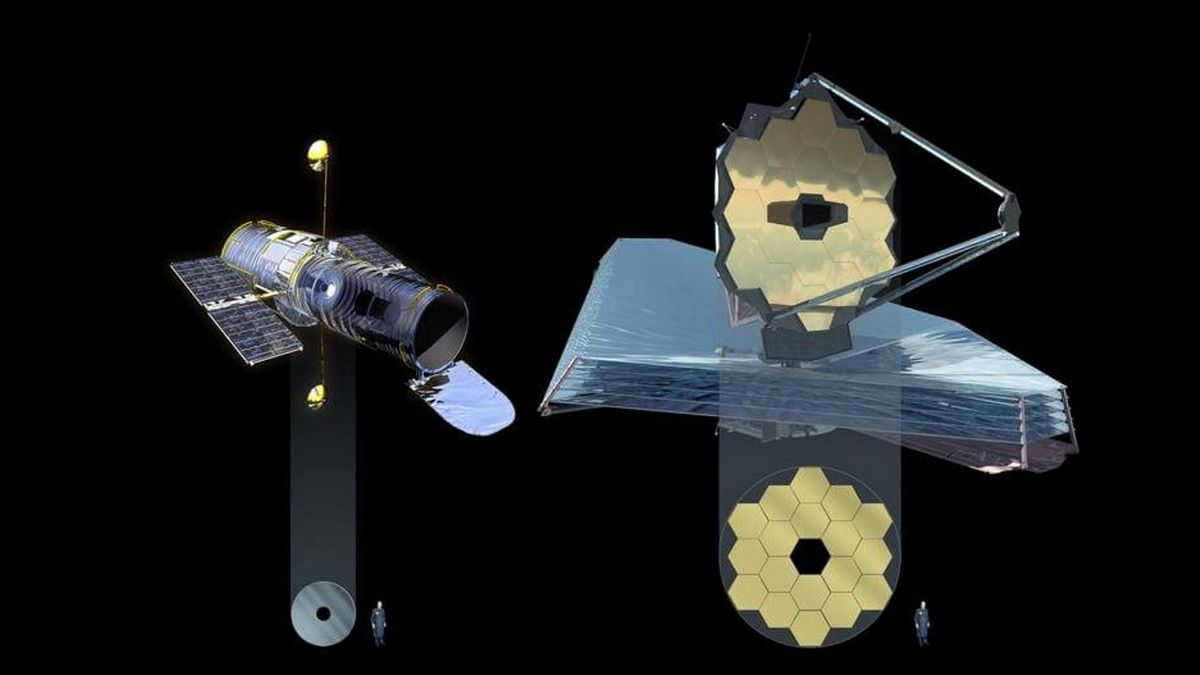
Given that light pollution and natural phenomena such as sunsets cause scattering in the Earth’s atmosphere, it would be optimal to utilize a telescope in orbit. The Hubble Space Telescope is an example of such an observatory. The James Webb Space Telescope, slated for launch in 2021, is anticipated to be the next generation observatory. Nonetheless, the challenge lies in the fact that there is a high demand for the Hubble telescope, and the same is expected for the Webb telescope upon its launch. Consequently, observatories cannot allocate all their resources to determine the mass of galaxies.
What is the mass of stars?
The mass of stars can vary between different galaxies, even if they have the same overall mass. According to Kornreich, there is a notable difference between elliptical and spiral galaxies in terms of their types of stars and total mass. Elliptical galaxies tend to have more yellow and red stars compared to spiral galaxies. Additionally, elliptical galaxies have a slower rotation and contain minimal amounts of gas, dust, or young, highly luminous stars.
Once the mass of a galaxy is determined, another challenging task is to determine the proportion of that mass that is attributed to stars. The majority of the mass is believed to be dark matter, which does not emit light.
“To ascertain the percentage of mass that is comprised of stars, one must create a model of the galaxy and analyze it,” explained Kornreich.
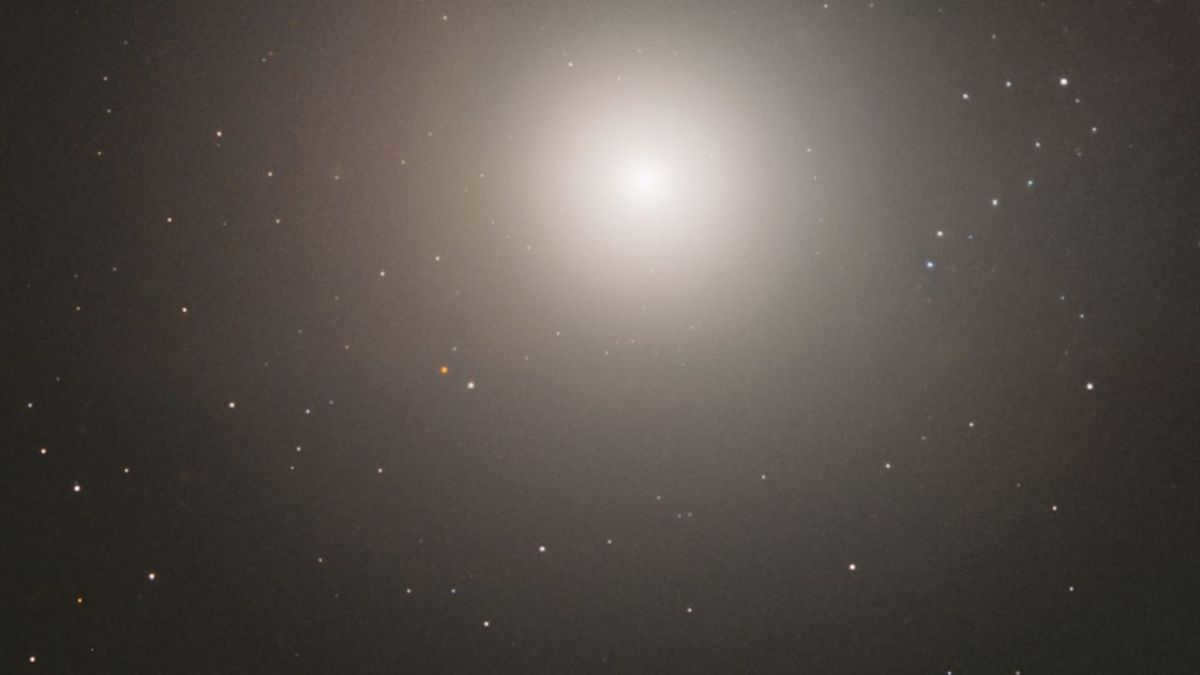
Kornreich approximates that approximately 3% of the galaxy’s mass is comprised of stars, with the majority of the remaining matter being diffuse gas and dust. However, this percentage can vary. Furthermore, the size of stars can vary significantly, ranging from several times smaller to several times larger than our Sun.
So, is there a definitive way to determine the exact number of stars in a galaxy? Ultimately, it boils down to estimation. Based on one calculation, the Milky Way has a mass of around 100 billion solar masses, which can be roughly translated to 100 billion stars. It is important to consider stars that are both larger and smaller than our Sun. However, calculating mass accurately is challenging, and other estimates place the galaxy’s mass somewhere between 400 and 700 billion solar masses.
The objective of the Gaia telescope, an initiative by the European Space Agency (ESA), is to chart the positions of approximately 1 billion stars within the Milky Way galaxy. The ESA has stated that Gaia will survey 1 percent of the stellar population in our galaxy, which encompasses the entirety of stars. Gaia’s aim is to construct the most precise three-dimensional map of the Milky Way.
Kornreich highlights that these figures are estimations that are subject to approximation. More advanced models can improve the accuracy of these approximations, but manually counting each individual star and determining the exact quantity within the galaxy would prove to be an exceedingly challenging task.
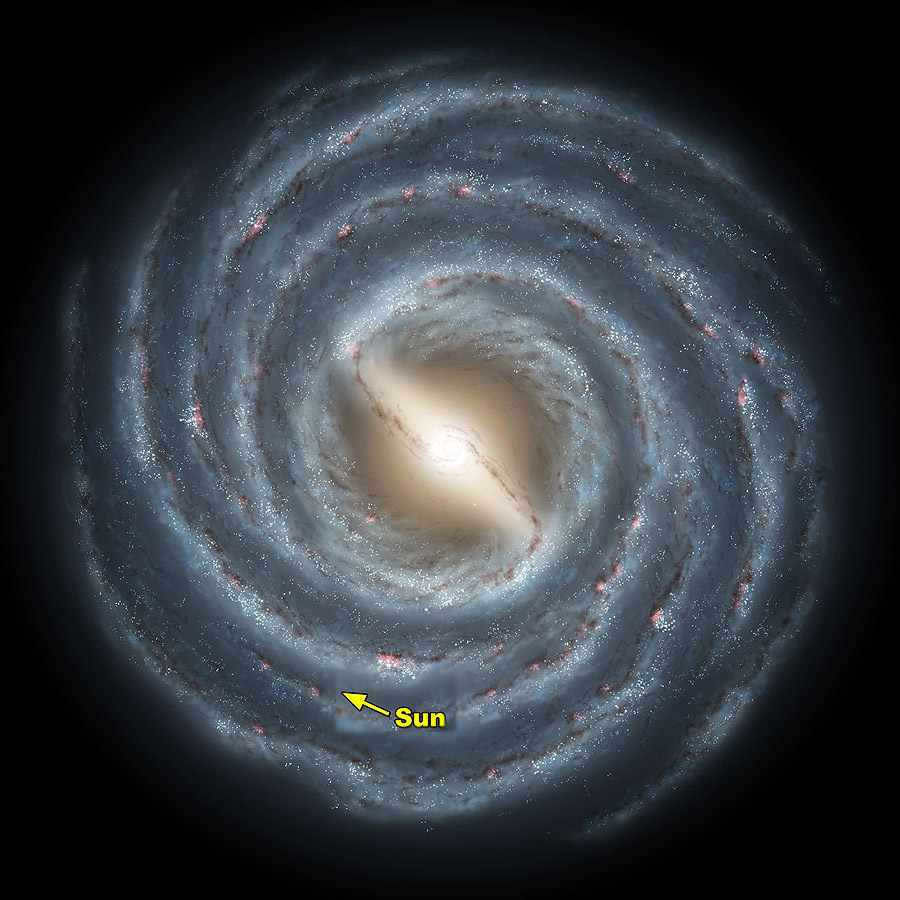
If the Universe’s “population” is divided into social groups, our Milky Way galaxy would be considered part of the prosperous “middle class”. It belongs to the most prevalent category of galaxies, yet it is not average in terms of size or mass. There are more galaxies that are smaller than the Milky Way than there are larger ones. Our “star island” also has at least 14 companions – other dwarf galaxies. These companions are destined to orbit the Milky Way until they are either absorbed by it or propelled away due to intergalactic collisions. As it stands, this is the only known place where life – that includes you and me – can be certain to exist.
However, the Milky Way still holds the title for being the most enigmatic galaxy in the entire Universe. As we reside on the outskirts of this “star island,” our view is limited to just a small portion of its vast collection of billions of stars. Moreover, the central region of the galaxy remains hidden from our sight, concealed by thick layers of interstellar matter including stars, gas, and dust. Today, we will delve into the intriguing world of the Milky Way, exploring its fascinating facts and unsolved mysteries.
Main Characteristics of the Milky Way
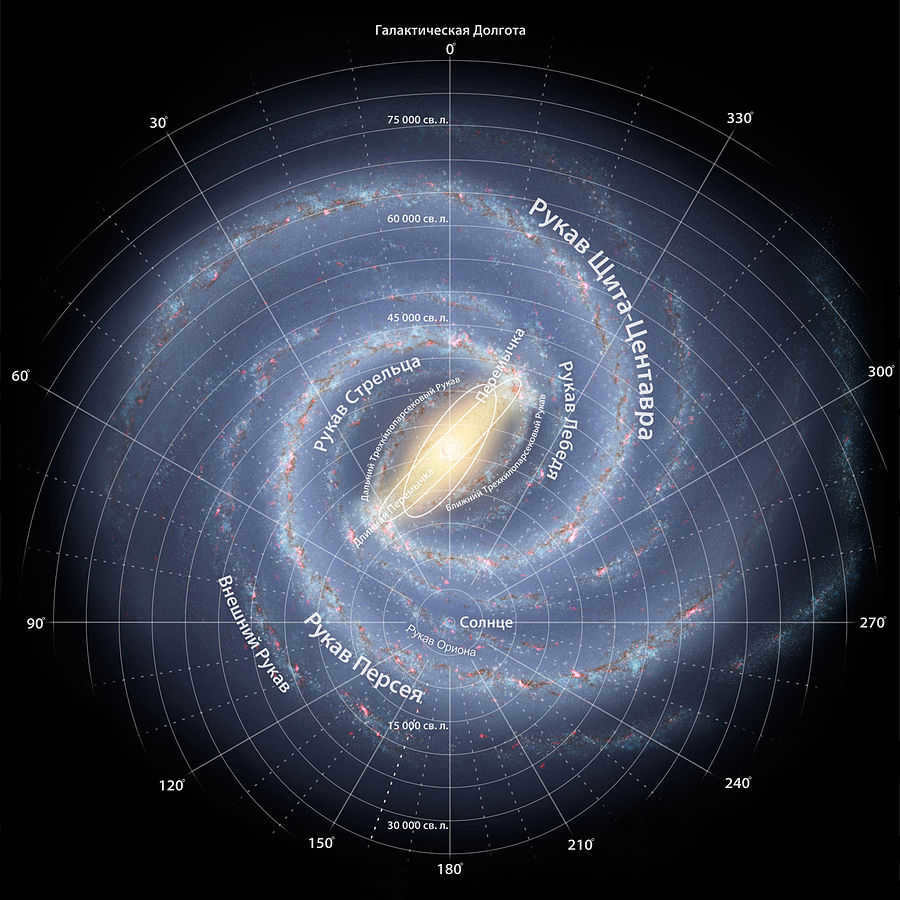
The name of our galaxy, which is associated with the gods, has an alternative version that is not widely known. In Greek mythology, there were two titans named Cronus and Rhea who were the parents of all the Olympian gods. However, the process of giving birth was initially slow: the giant Cronus was afraid that his children would overthrow him, so he devoured them all. Rhea, as a mother, was devastated to witness the demise of her own offspring. Therefore, she concealed her last child, Zeus, and instead swaddled a stone and presented it to her husband. Kronos, upon feeling the “baby,” declared that the child was too hard and thin, and requested that he be fattened up. The splatter of the goddess’s milk, which reflected off the cold stone and into the sky, became the luminous trail of stars known as the Milky Way. And it was the rescued Zeus who later overthrew his tyrant father.
What is the reason behind this terrifying tale? The fact is that the Milky Way galaxy has fully embraced the nature of its mythological progenitor. It is colossal in size, akin to a titan, and it continues to devour its companion-children. At this very moment, the dwarf galaxy known as Sagittarius is being gradually absorbed into our stellar realm. The same destiny awaits the other satellites that are visible to the naked eye – the Large and Small Magellanic Clouds. The gravitational forces exerted by the Milky Way are already wreaking havoc on their spiral structures, causing the “star islands” to disintegrate into amorphous clusters of gas and stars.

The Large and Small Magellanic Clouds
Absorption, which is indeed true, does not result in the immediate demise of an island of stars. “Swallowed” galaxies can peacefully pass through the Milky Way, shedding some stars along the way, and continue to orbit around it. However, just like in the myth, the giant will face retribution. Within the Local Group of galaxies, the Milky Way is only second in terms of size and mass, trailing behind the Andromeda galaxy. In about 3-4 billion years, our galaxy will meet its demise at the hands of its larger neighbor – it will be swallowed by the Andromeda galaxy.
We have previously discussed the impending collision and its consequences. In this article, we will delve into the Milky Way’s uniqueness as a spiral galaxy, which we are fortunate enough to observe from within.
Distinctive Features of the Milky Way
The field of physics is built upon specific values and accurate variables – these are the tools that enable us to comprehend the destiny of various phenomena, ranging from a sandwich dropping onto the ground to enormous galaxies that stretch across countless light years. The Milky Way is no anomaly. Let us examine the extraordinary characteristics that define our celestial abode.
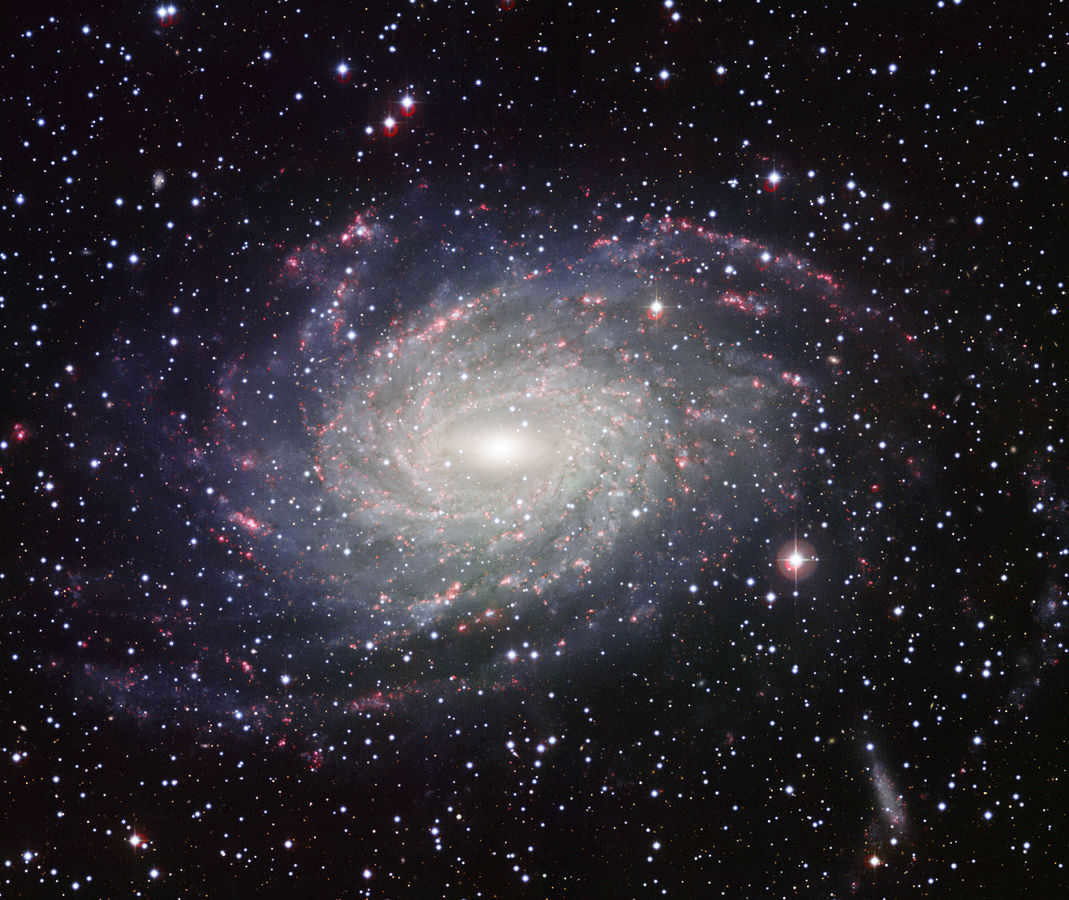
The galaxy NGC 6744 is often considered to be remarkably similar to our own Milky Way.
- The galactic disk of the Milky Way spans a distance of 50-90 thousand light years in all directions from its center. While not enormous, this is still a significant size. For comparison, the radius of the largest satellites of the galaxy, the Magellanic Clouds, is only 7 thousand light years. However, our closest neighboring galaxy, the Andromeda Galaxy, is much larger than the Milky Way. It takes a light beam 110,000 years to travel from the core of the Andromeda Galaxy to its outermost edge.
- The core of the Milky Way is estimated to be approximately 27,000 light years away from our Sun. It is believed that our star is located closer to the outskirts of the galactic disk rather than the center. As a result, the size of the Milky Way is typically measured within a smaller range. Furthermore, our celestial body travels at an astonishing velocity around the galactic center, ranging from 200 to 250 km/sec. However, despite its impressive speed, it still requires 240 million years to complete a full orbit around the Milky Way. In order to break free from the gravitational pull of the galaxy and embark on an intergalactic journey, the Sun would need to accelerate to a speed of 550 km/sec.
- Nevertheless, the true indicator of galaxy magnitude lies in the quantity of stars it contains. Naturally, it is impossible to make a precise calculation. However, it is the observable matter that enables us to assess the enormity and density. The Milky Way is home to anywhere between 100 and 400 billion stars – the precise figure hinges on the method used to estimate the number of stars obscured from our view by the galactic center and other spiral arms.

The image above shows a view of the Milky Way arm from Earth. It is important to note that all the visible stars in the image are part of our galaxy.
- Estimating the exact number of stars in the Milky Way is a complex task due to the presence of dark matter, which accounts for a significant portion of its mass. However, the mass of the galaxy itself is estimated to be between 1 and 1.5 trillion solar masses. This measurement allows for a more accurate comparison of the Milky Way with other neighboring galaxies.
Classification and Overall Structure
The SBbc galaxy is a representative example of a spiral galaxy with a junction. It is estimated that spiral galaxies constitute 55% of all the galaxies in the Universe. Among spiral galaxies, lintel galaxies are the most prevalent subtype, accounting for two-thirds of the total. Spiral-junction “star islands” are considered to be relatively young galaxies by scientists. As the galaxy’s resources are depleted over time, the junction eventually fades away.
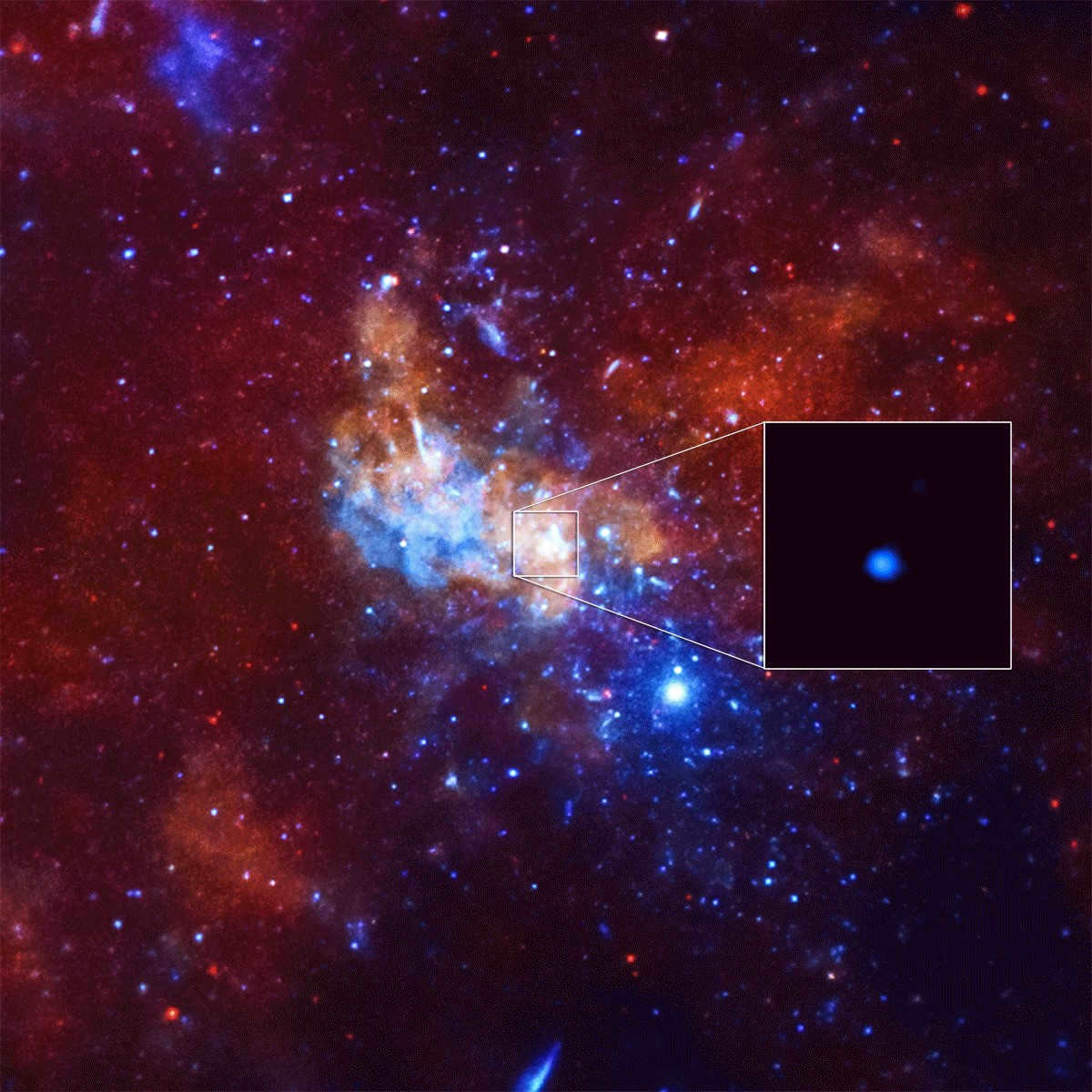
An illustration of the core of the Milky Way galaxy is displayed above. This image showcases the central region of our galaxy, which is home to a dense concentration of stars and other celestial objects.
What is the nature of this celestial phenomenon and what does it resemble? Let’s briefly examine the structure of our Milky Way. Astronomers have a relatively good understanding of its components compared to other galaxies.
- It is a well-established fact that the Milky Way contains a prominent feature known as the nucleus. This central part of the galaxy serves as the gravitational center, around which all other components of this “star island” revolve. Within the Milky Way, the nucleus is composed of a collection of stars and dust clouds that orbit at high velocities around the supermassive black hole known as Sagittarius A*. Notably, the nucleus of our galaxy is classified as active, as it emits a greater amount of energy than the combined output of all its constituent stars.
- The next feature is the balge, which is derived from the English word “swell, bulge”. It is a spherical shell of volume that surrounds the center of the Milky Way. This region is composed of large giant stars, aging luminaries, and hot gases that orbit the core at incredibly high speeds. The Bulge is not only the most densely packed area of our galaxy, but also the brightest section of any galaxy. Unfortunately, it is largely obscured from our view due to the arms of the Milky Way and its own cloud cover.
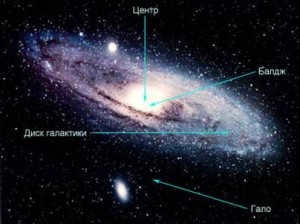
- Both sides of the lintel feature a bridge that connects to the galactic arms of the Milky Way. This bridge is often not recognized as a distinct component, as it seamlessly merges with the lintel, leaving only a slight bulge in the center. The junction can be likened to a bustling and tumultuous riverbed, where galactic gases and dust constantly collide and create the conditions for vibrant star formation.
- The Milky Way galaxy has two main spiraling arms known as the Shield-Centaurus and Perseus arms, which stretch out from the edges of the lintel. These arms are named after the constellations in the Earth’s sky that align with them. Additionally, there are at least 5 smaller arms that run parallel to the main arms. However, these smaller arms are considered part of the galactic disk, which is a thin layer of the galaxy where most of its visible matter is concentrated. The thickness of the Milky Way disk is 2 thousand light-years, making it relatively small compared to its diameter of 180 thousand s.l.
Here’s an intriguing tidbit of information. Sleeves possess a rather unconventional structure. While the gas and dust maintain their spiral form and revolve with the galaxy, the stars operate independently – they detach from the “parent” arms and venture off to other arms. There exists only a small interval where the movement of stars and arms coincide – within this sector lies our very own Sun. Astronomers theorize that being situated in such a tranquil location enabled the formation of life on Earth. Collisions with cosmic dust clouds and close encounters with neighboring stars would have had a significant impact on the Sun’s planetary system.
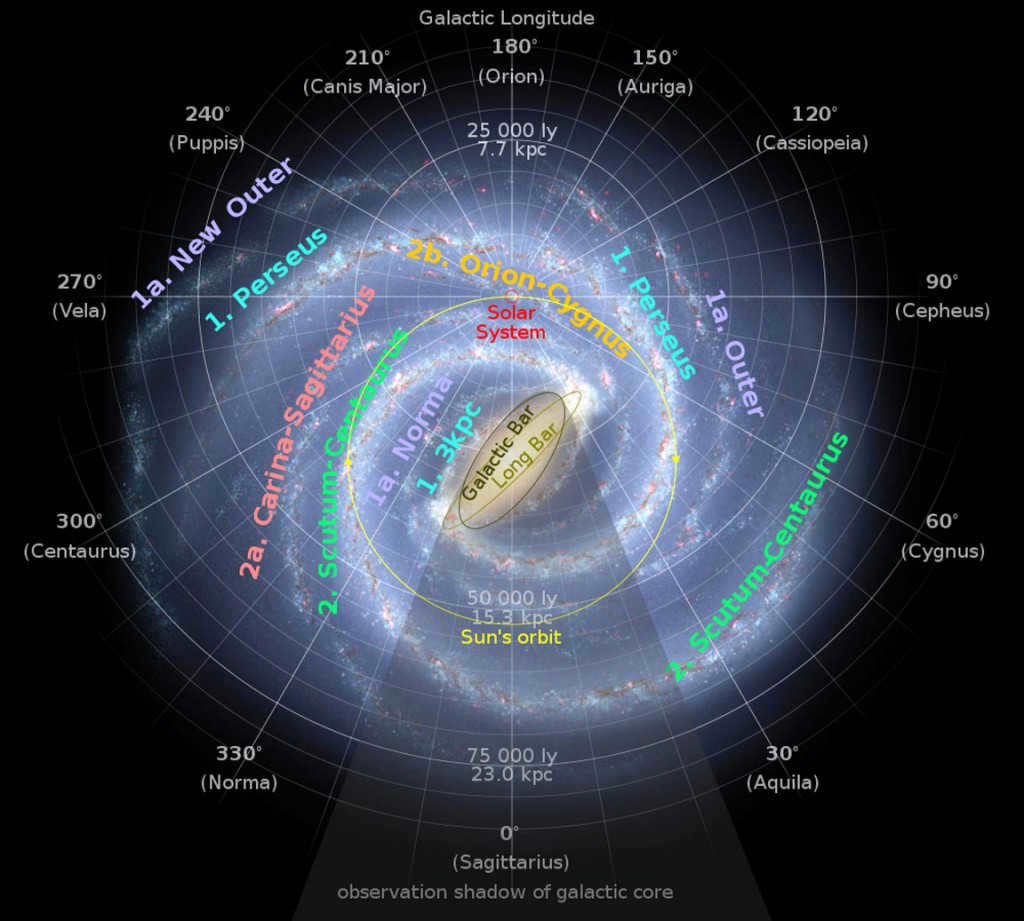

In the vast expanse of the galaxy lies a mysterious region known as the halo. Its exact boundaries remain a mystery, as no one knows how far it extends or where it ends. The halo is predominantly composed of dark matter, a substance that eludes easy detection. However, there are certain visible components within it. These components are referred to as the spheroidal component of the Milky Way in the field of astronomy. They consist of luminous stars and clouds of gases that do not belong to the star disk, such as globular clusters. These clusters are densely packed with stars, with up to 700 to 7000 times more stars per cubic parsec than the surrounding space!
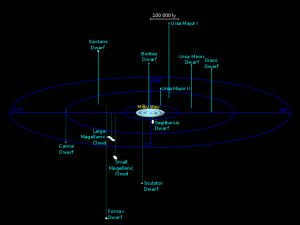
The explanation for the existence of these peculiar entities is quite straightforward – they are the remnants of the nuclei of the galaxies that were assimilated by the Milky Way in previous eras. Remarkably, these remnants, known as “bones,” constitute approximately one-fourth of all globular star clusters within our galaxy.
A journey through time: tracing the Milky Way’s past and future
The oldest star discovered within our galaxy, HD 140283, is an astonishing 13.7 billion years old – a mere 100 million years younger than the entire Universe itself. During this period, our galaxy was undergoing rapid evolution. As heavy elements such as oxygen, carbon, and iron are primarily formed within stars, the initial luminaries of our galaxy, right after the Big Bang, consisted solely of helium and hydrogen. Without the presence of these heavy elements, which act as stabilizers, new stars were able to grow to immense sizes and endure for millions of years before eventually exploding. By examining the presence of metals in the composition of the Sun and the surrounding gas-dust disk, we can confidently state that nearly all matter within the Milky Way has, at some point, resided within another star.
And what was happening with the Milky Way during this time? Similar to all newly formed galaxies, it was actively assimilating the matter dispersed within its halo. This is still occurring today. Gas clouds with high velocity move around the galaxy and descend onto its disk, providing the material necessary for the creation of new stars. Additionally, during the early stage, the Milky Way actively absorbed smaller dwarf galaxies that crossed its path. This is the reason why the galaxy currently only has 14 of its numerous satellites remaining.
The video provided below demonstrates a computer-generated model of the collision between these two galaxies, and is one of the most high-quality models produced to date.
However, after 4 billion years, the Milky Way will engulf the satellites, according to scientists, who speculate that this process may have already commenced. Presently, the Large and Small Magellanic Clouds, the two satellites of our galaxy that can be seen without the aid of a telescope, are gradually losing their substance, which is accumulating at the southern pole of the Milky Way. It is theorized by scientists that these satellite galaxies were once part of a colossal ring that fragmented during the expansion of our galaxy.

